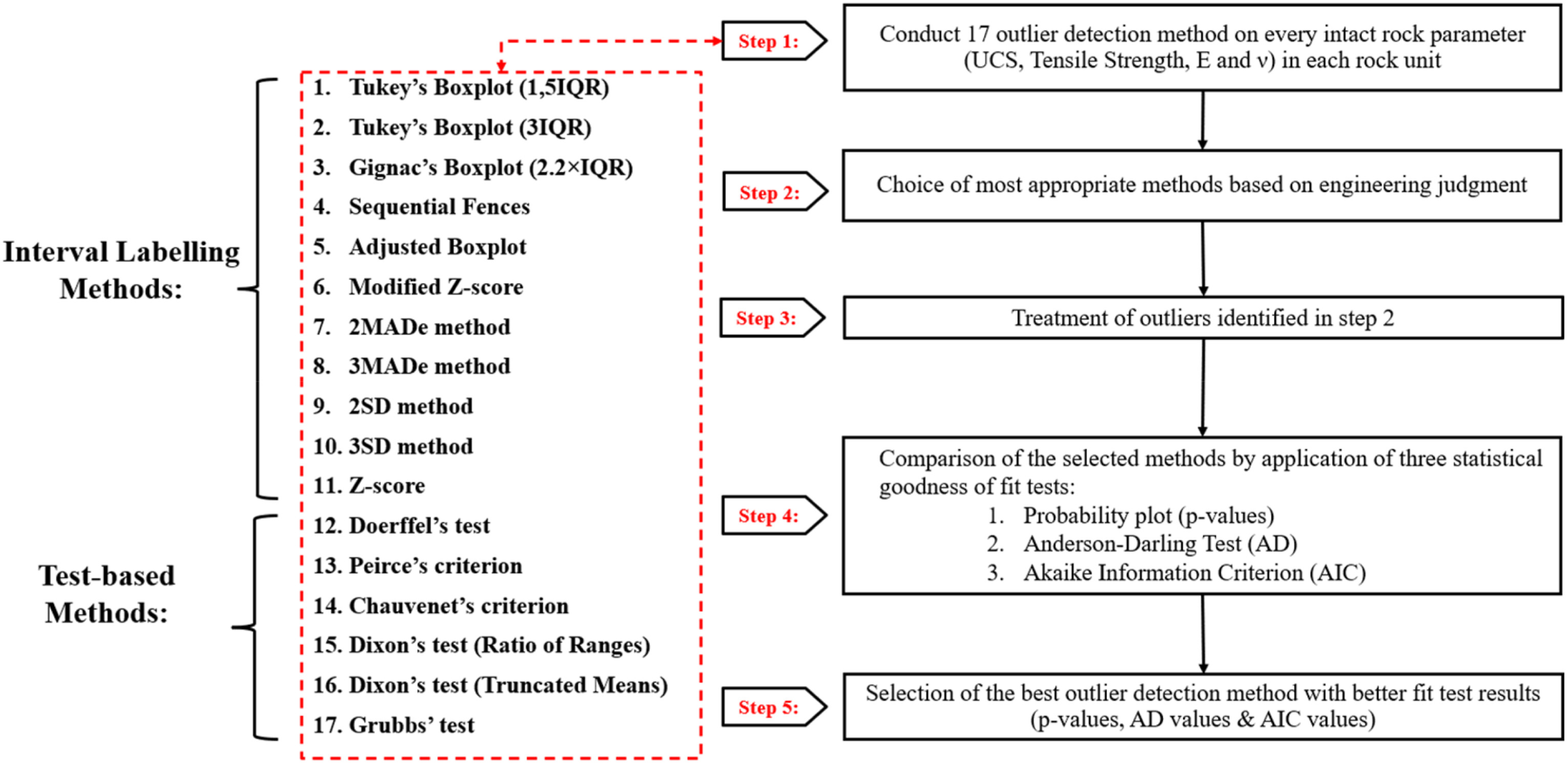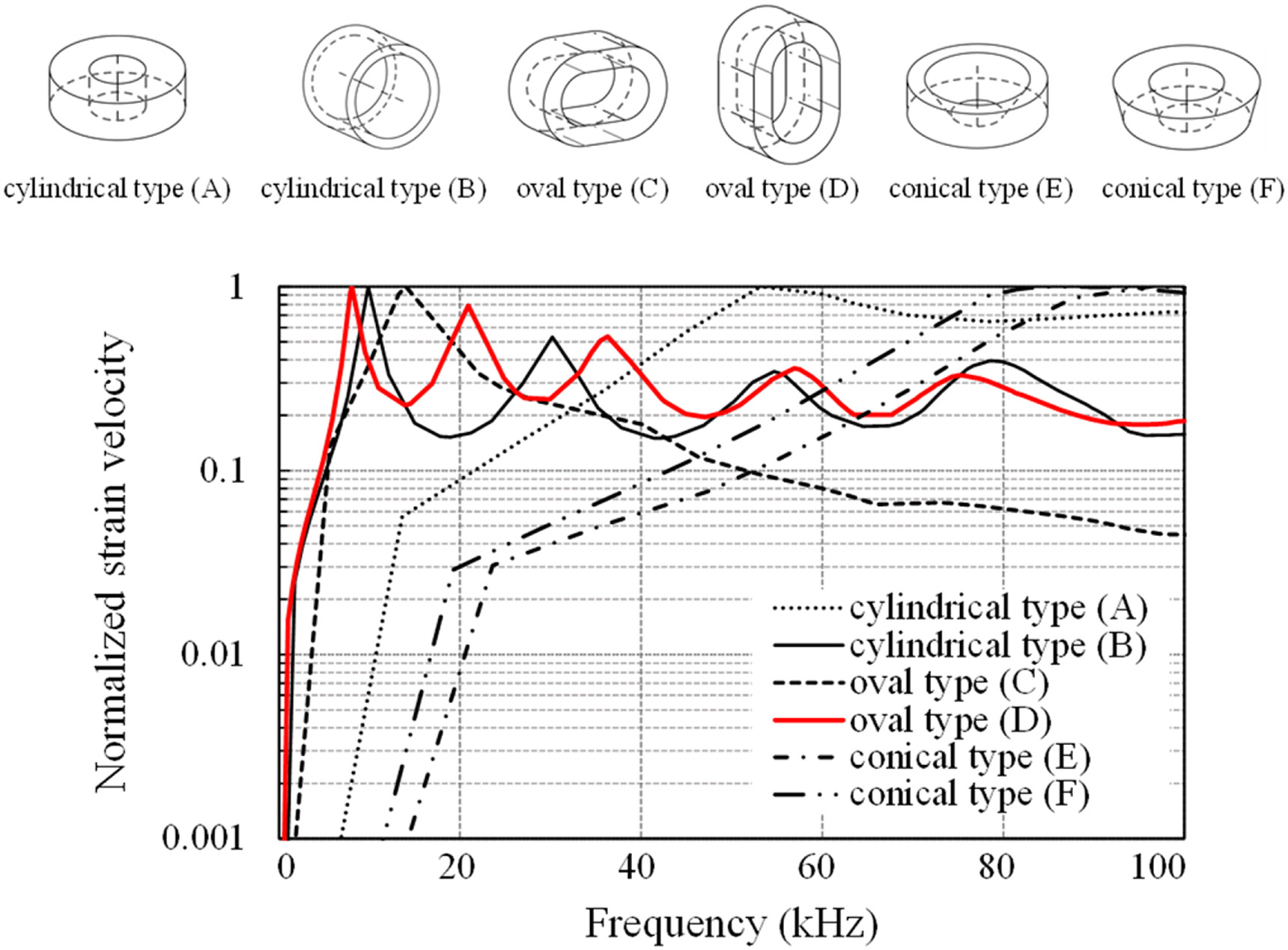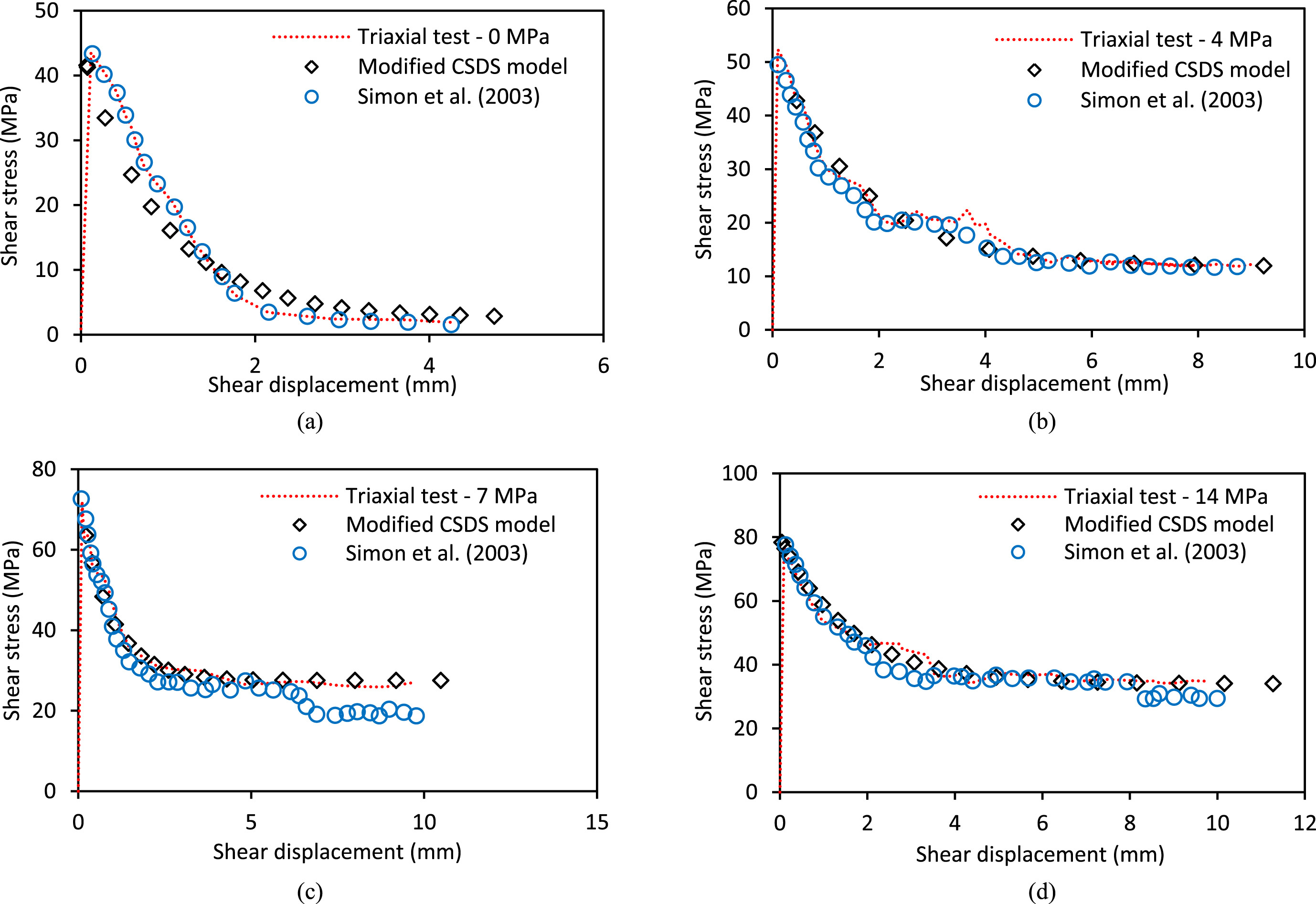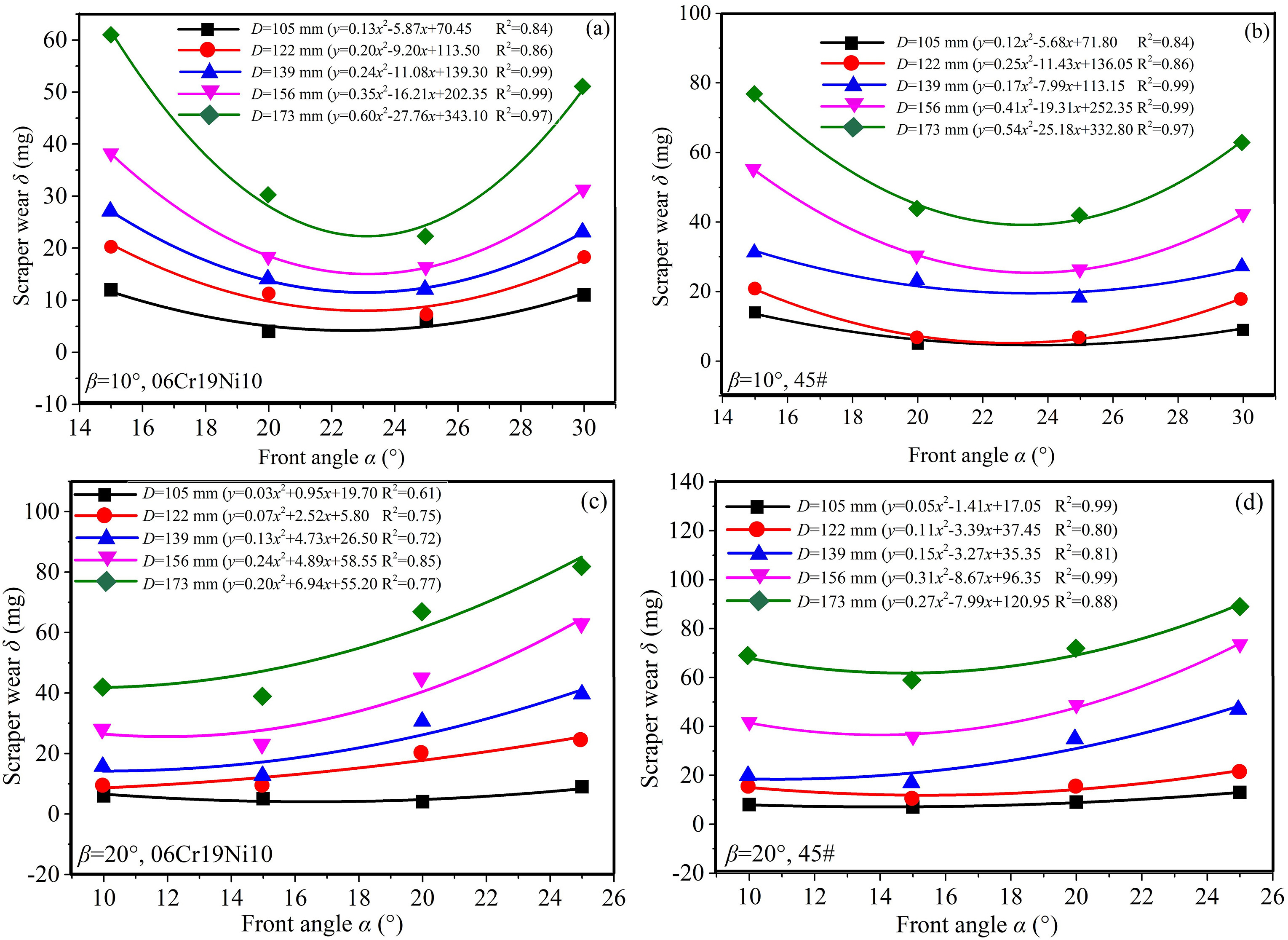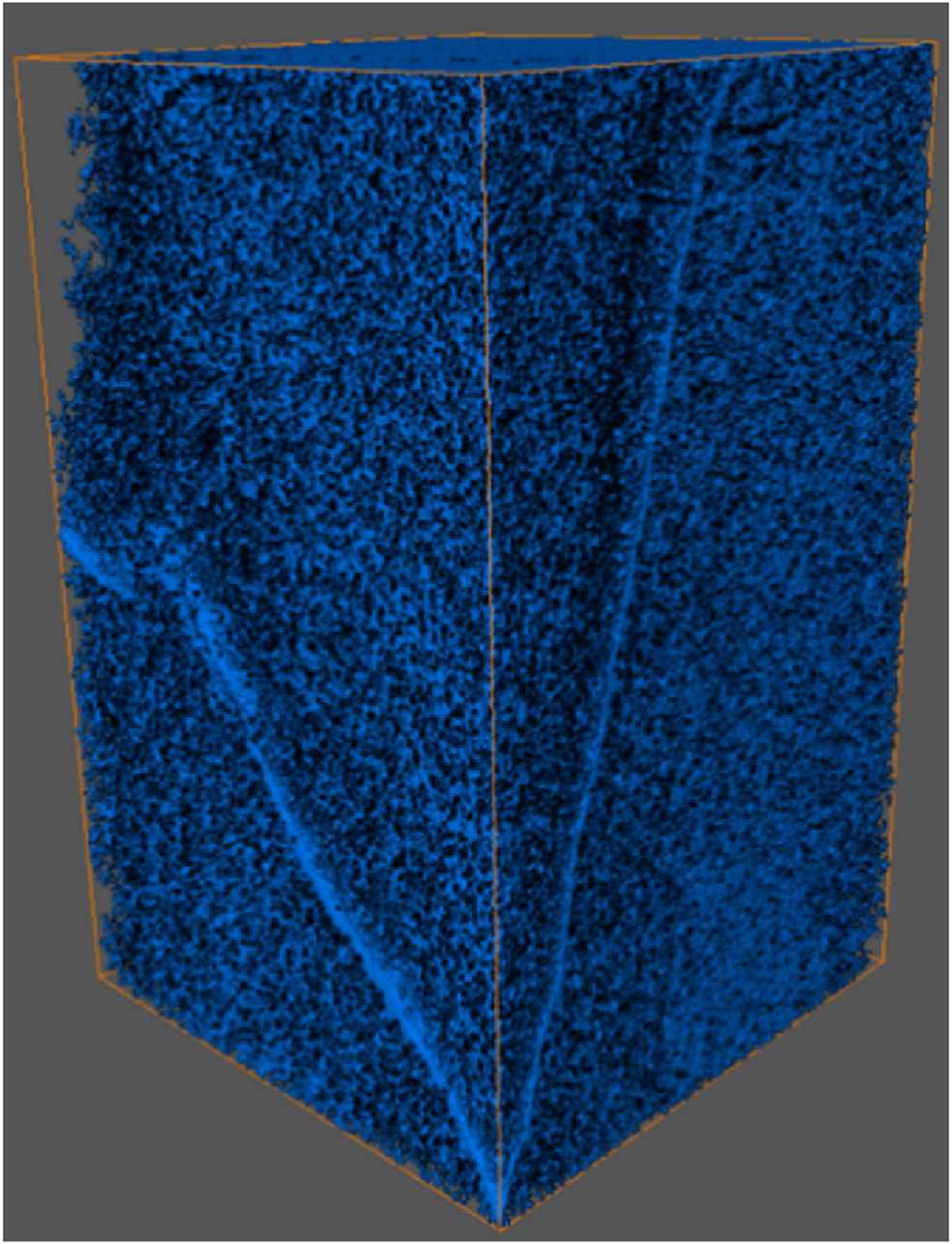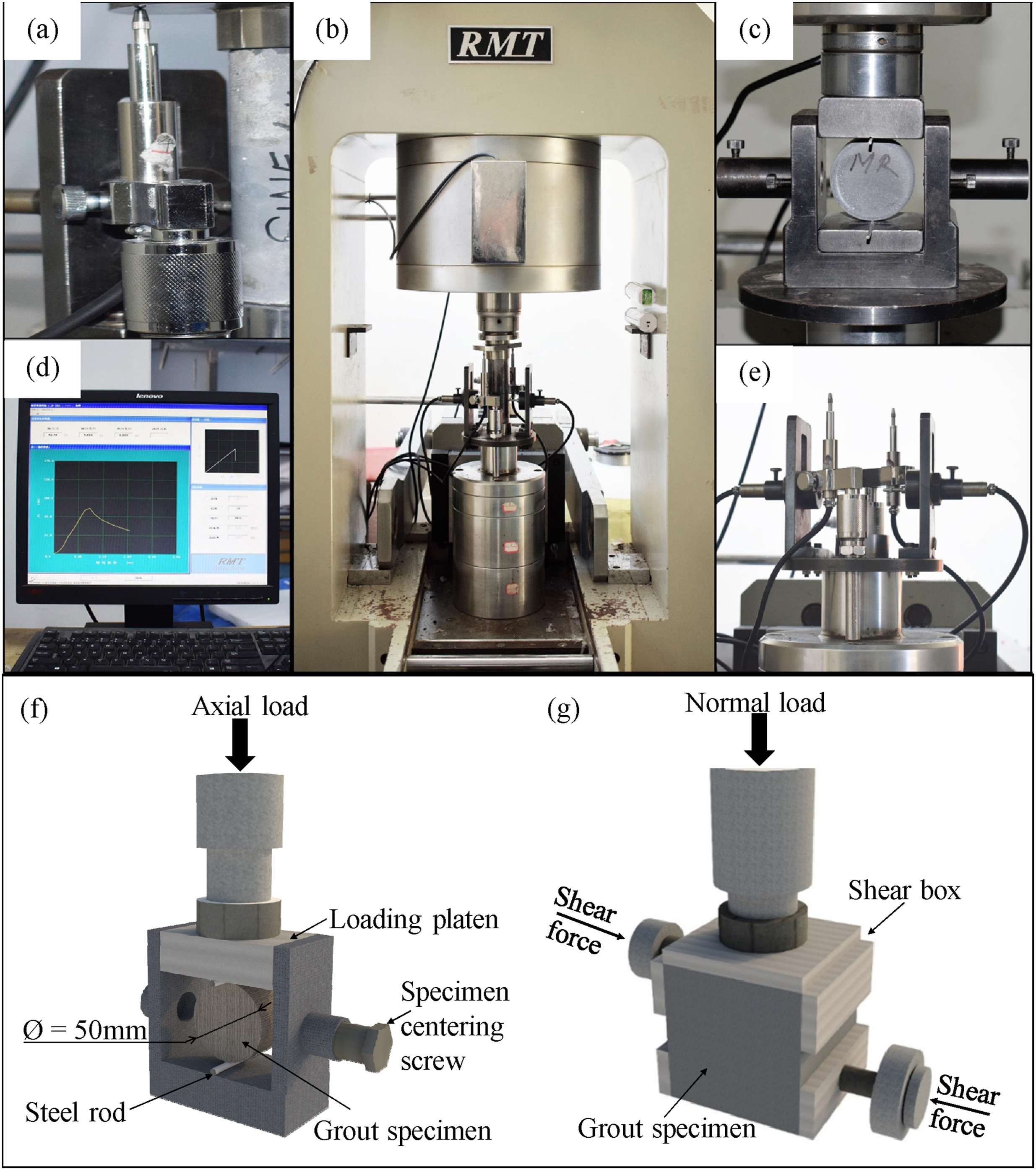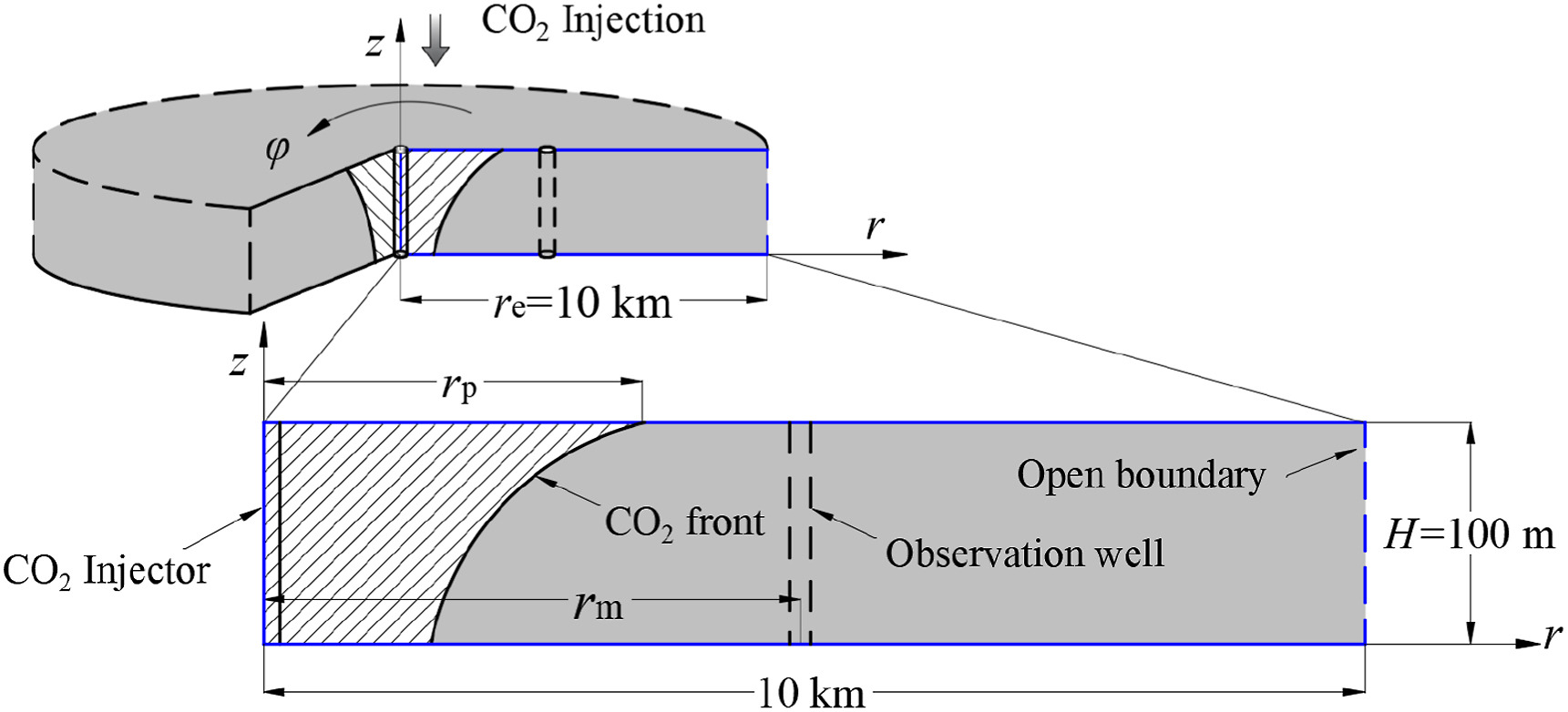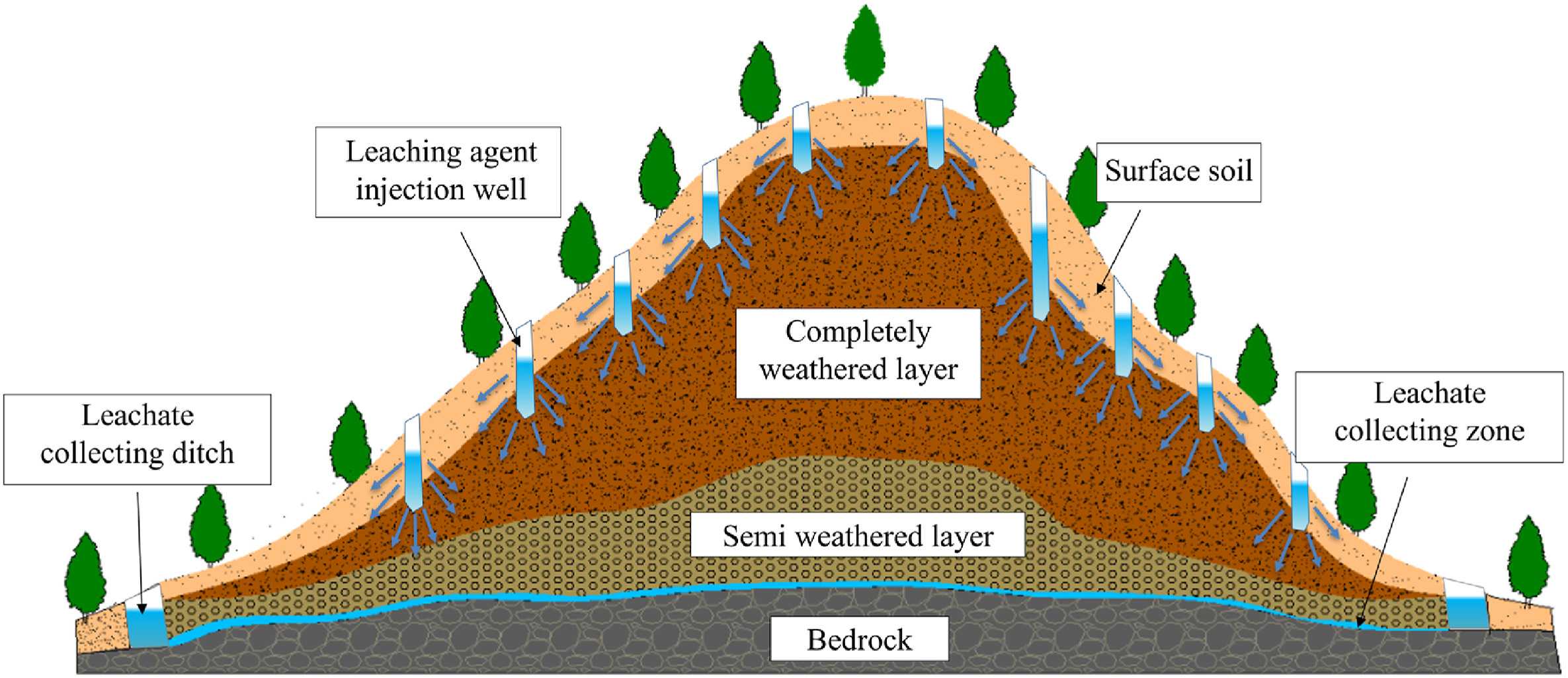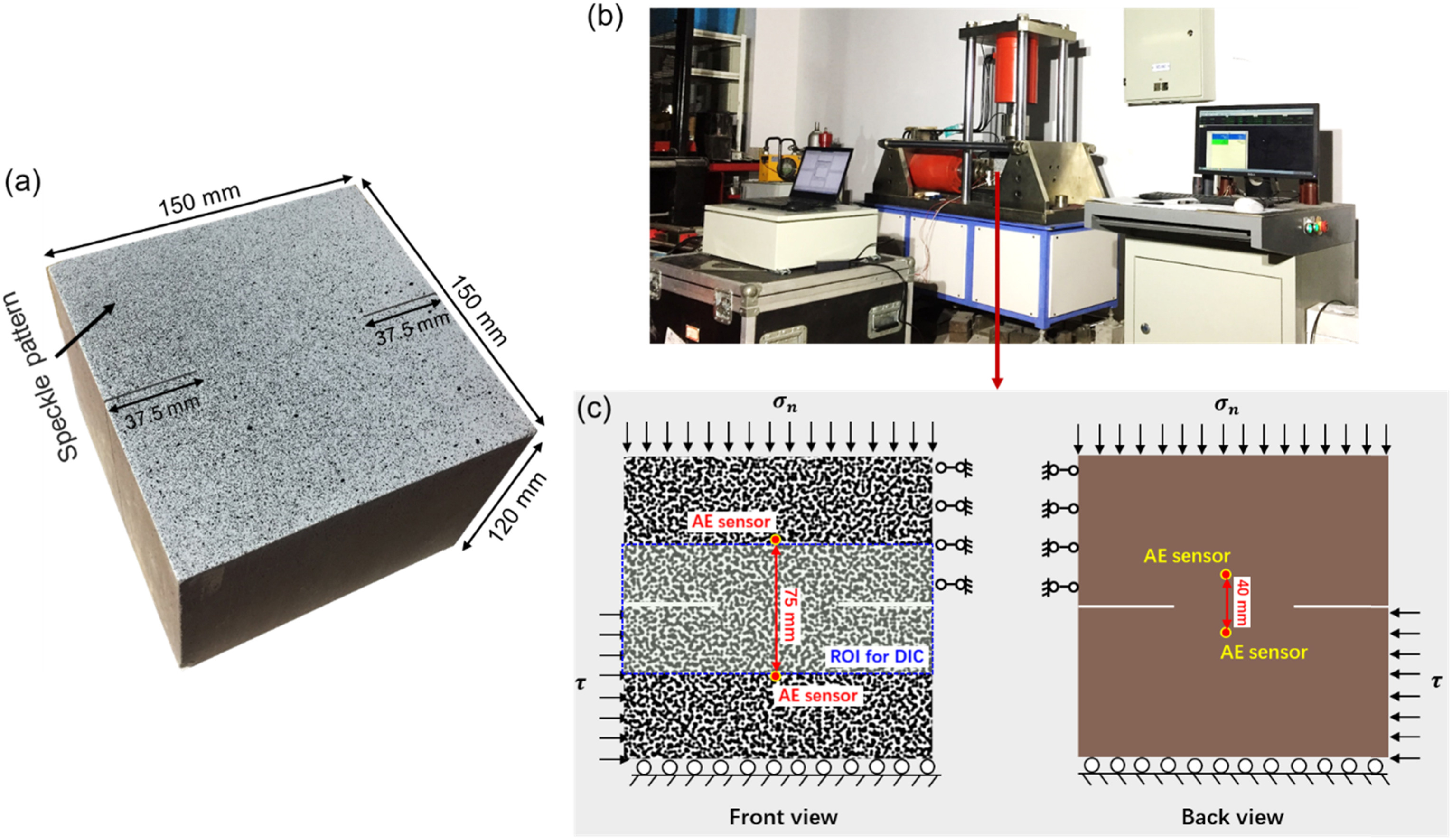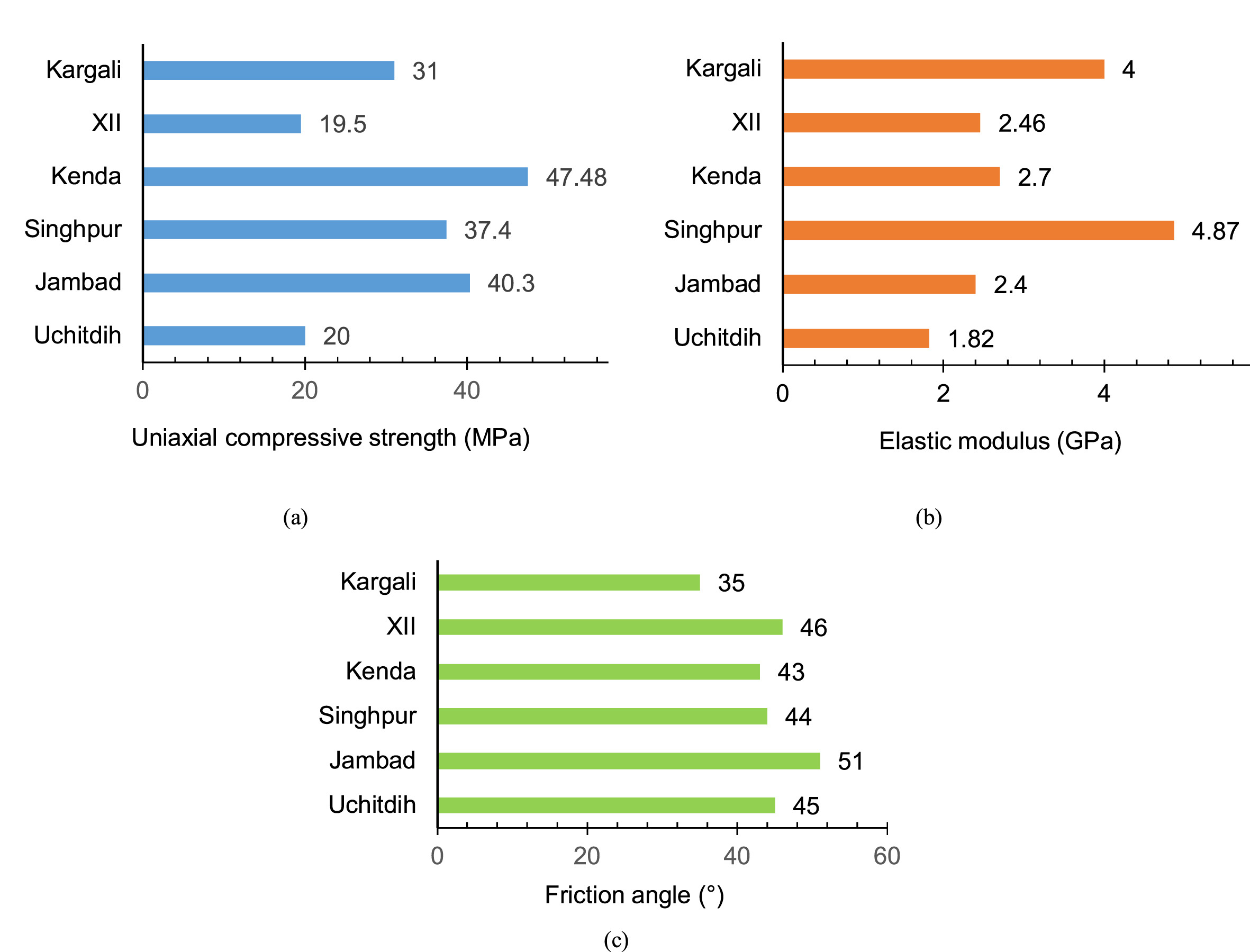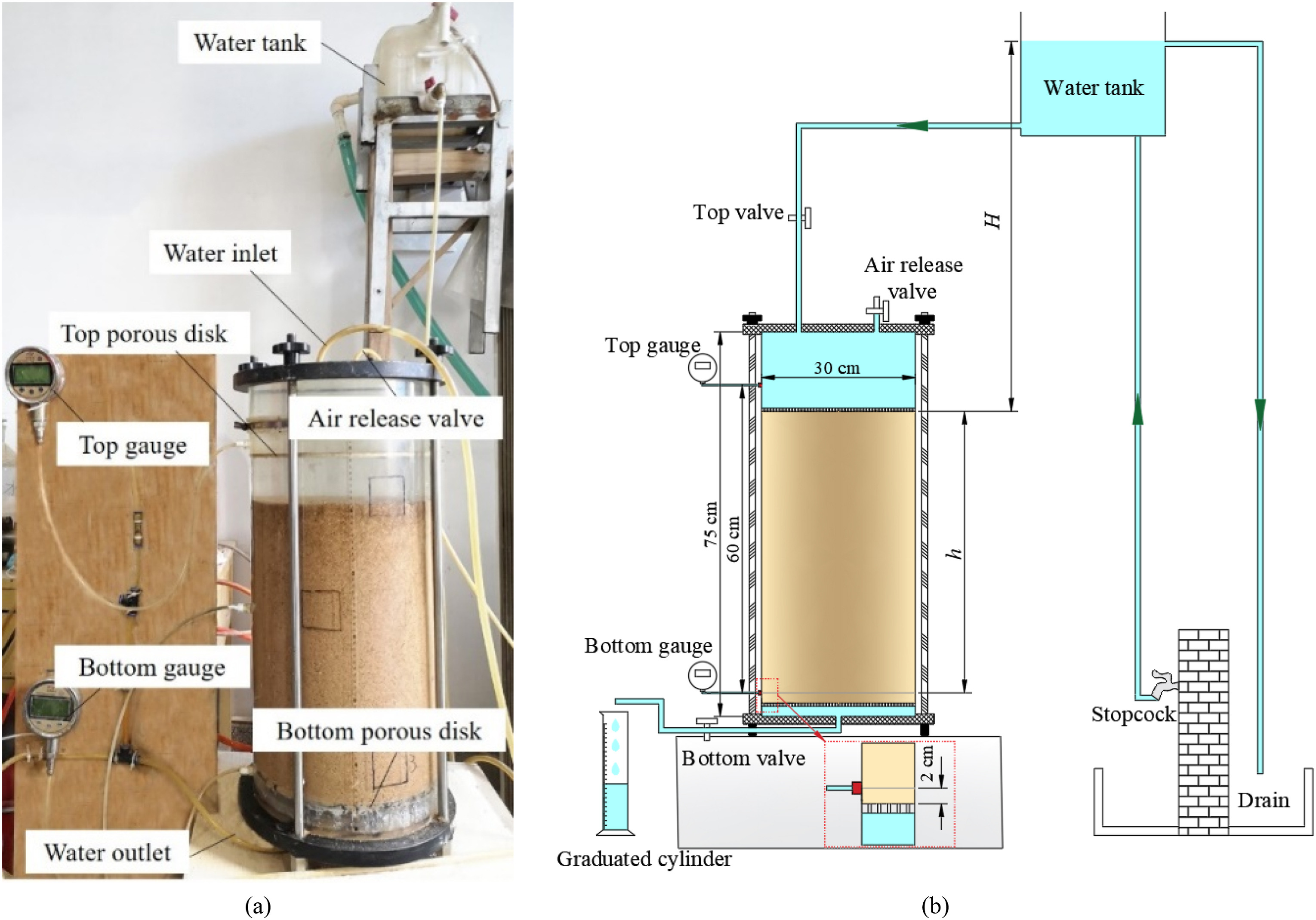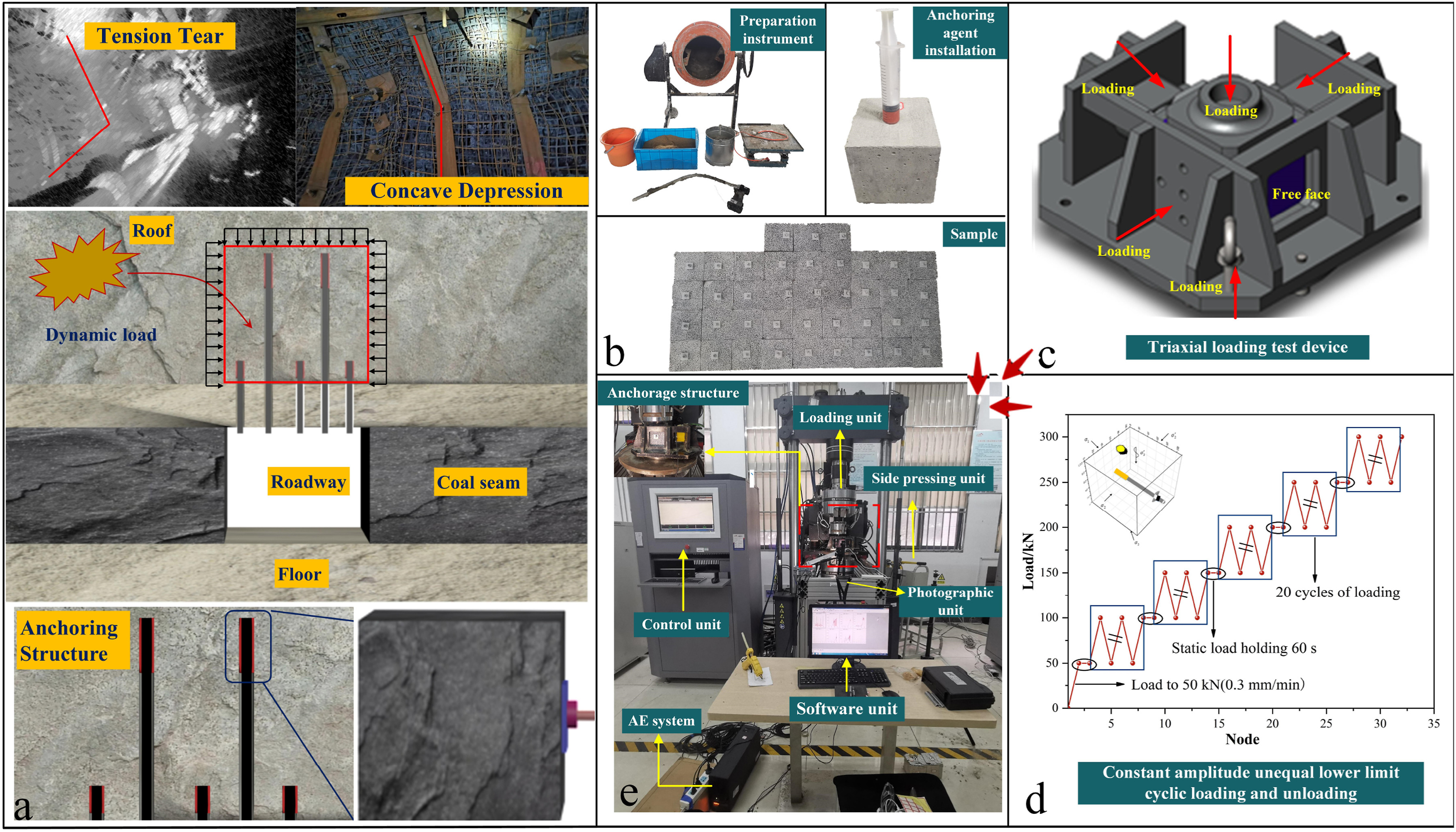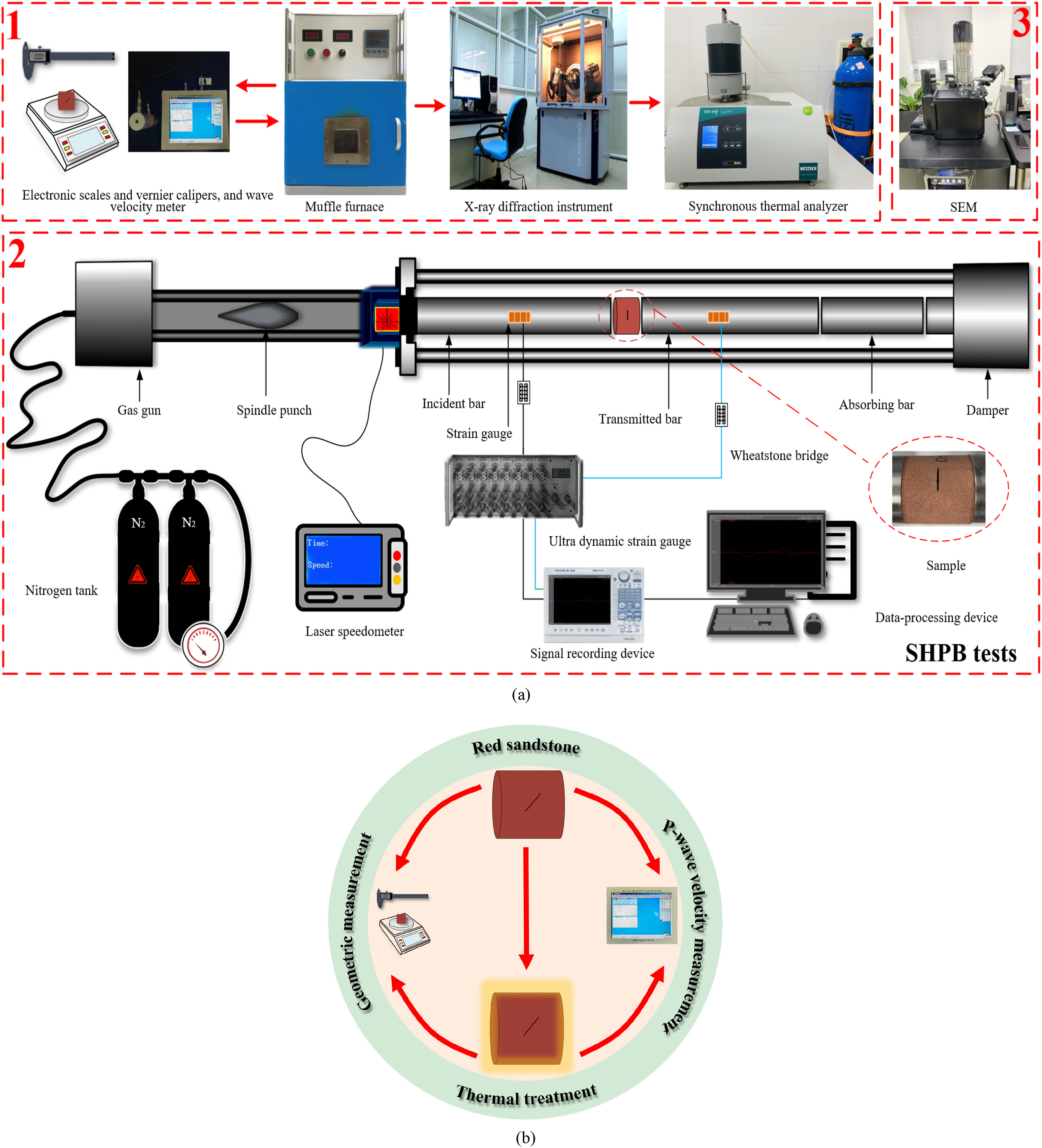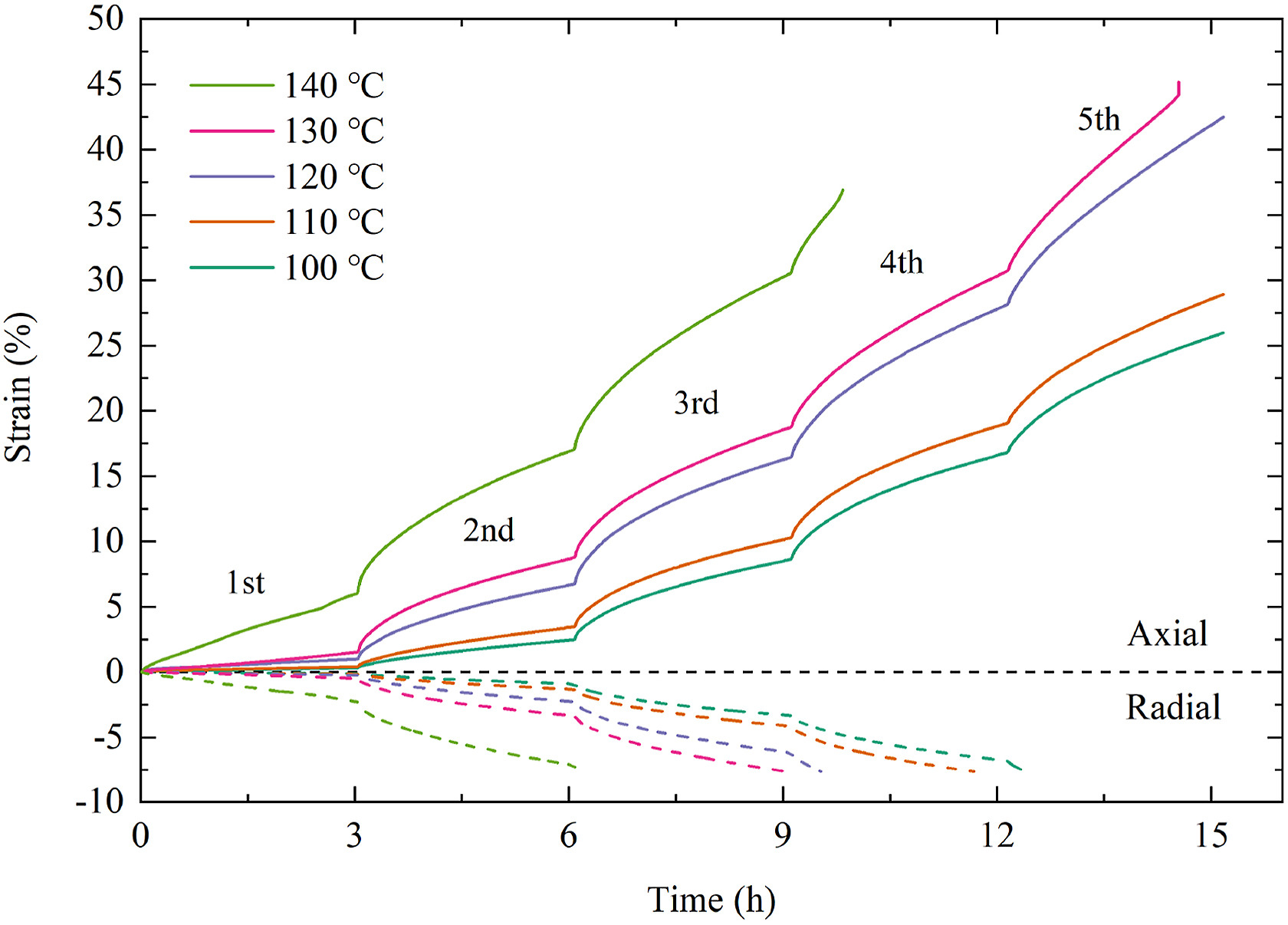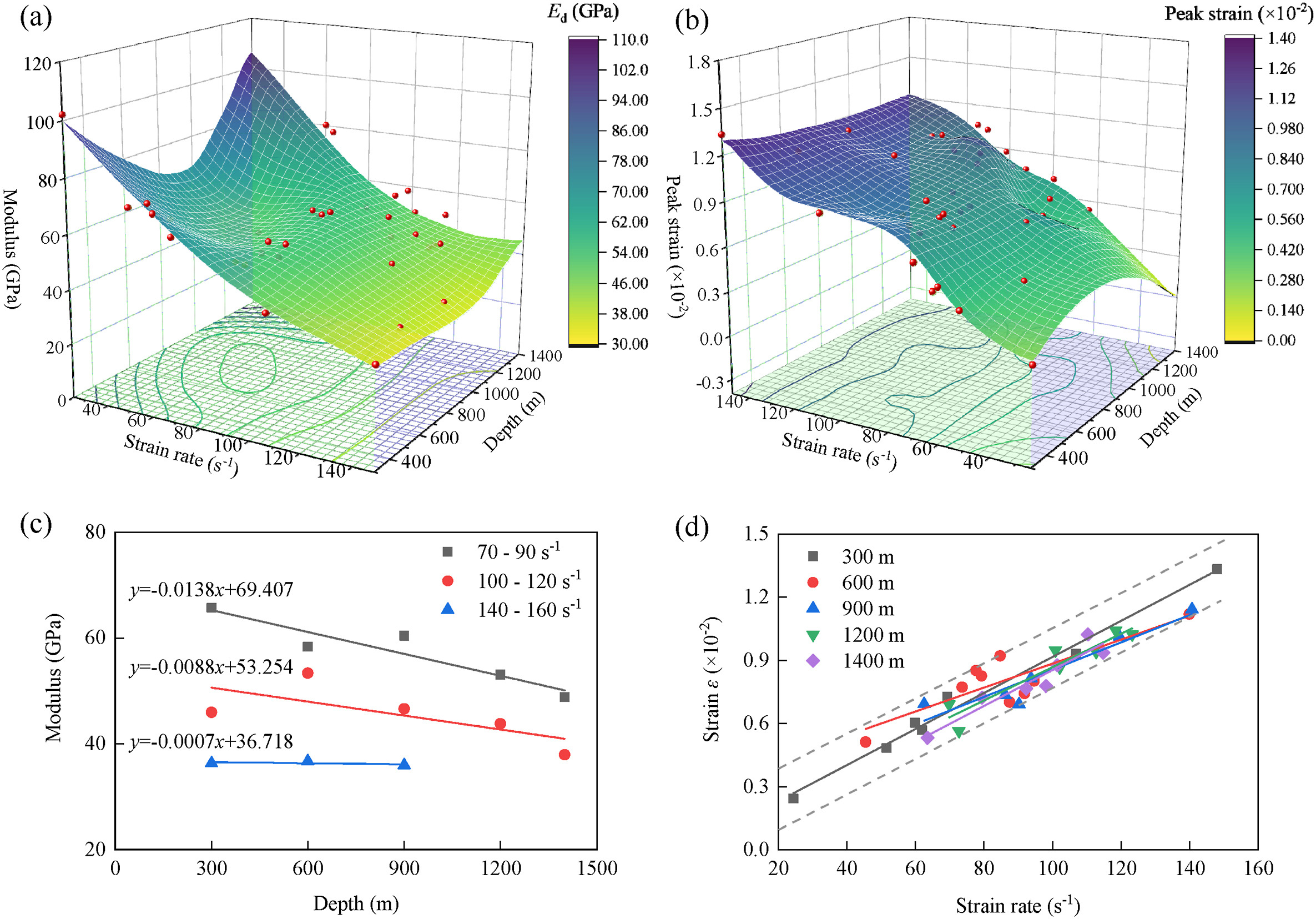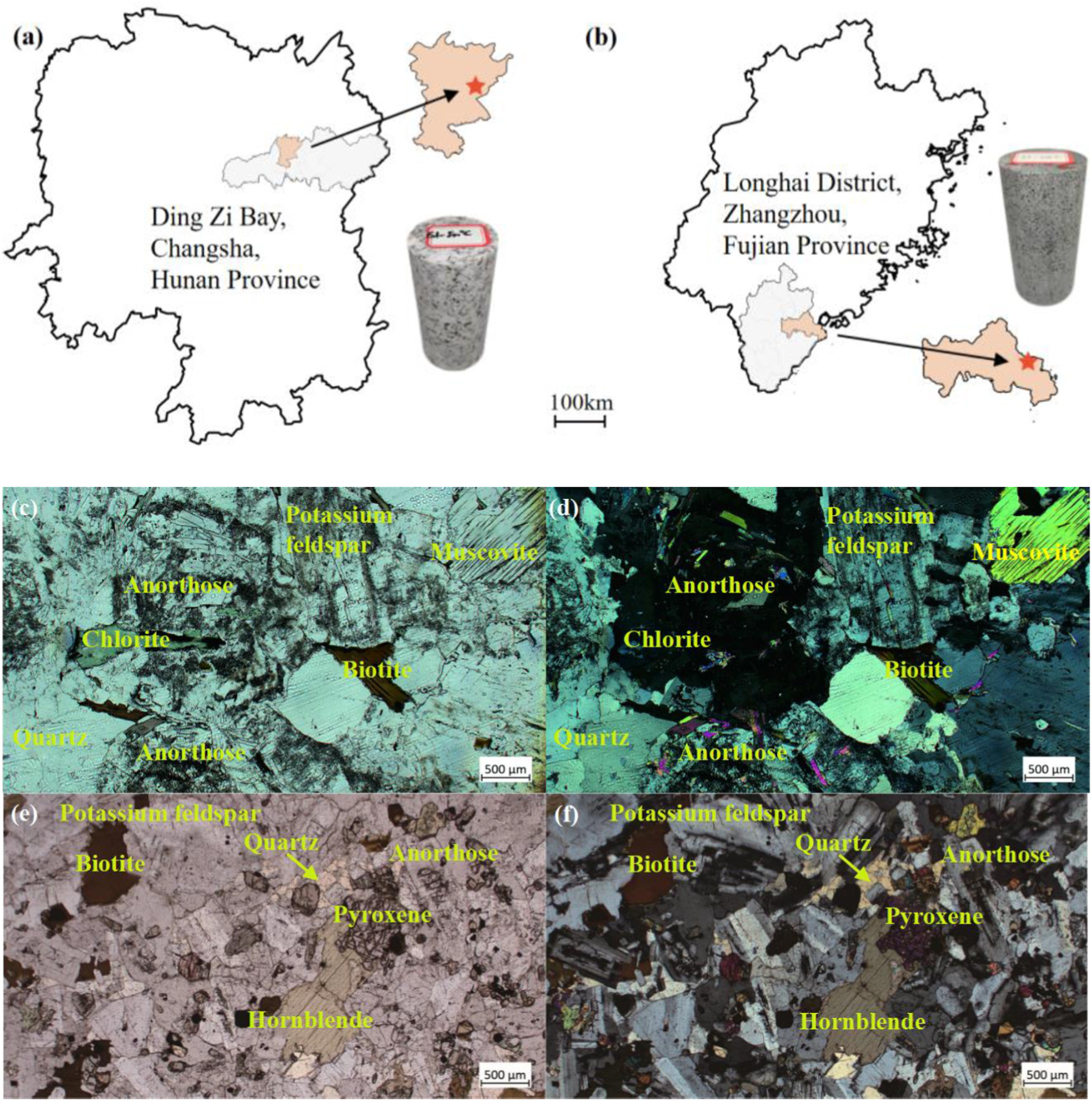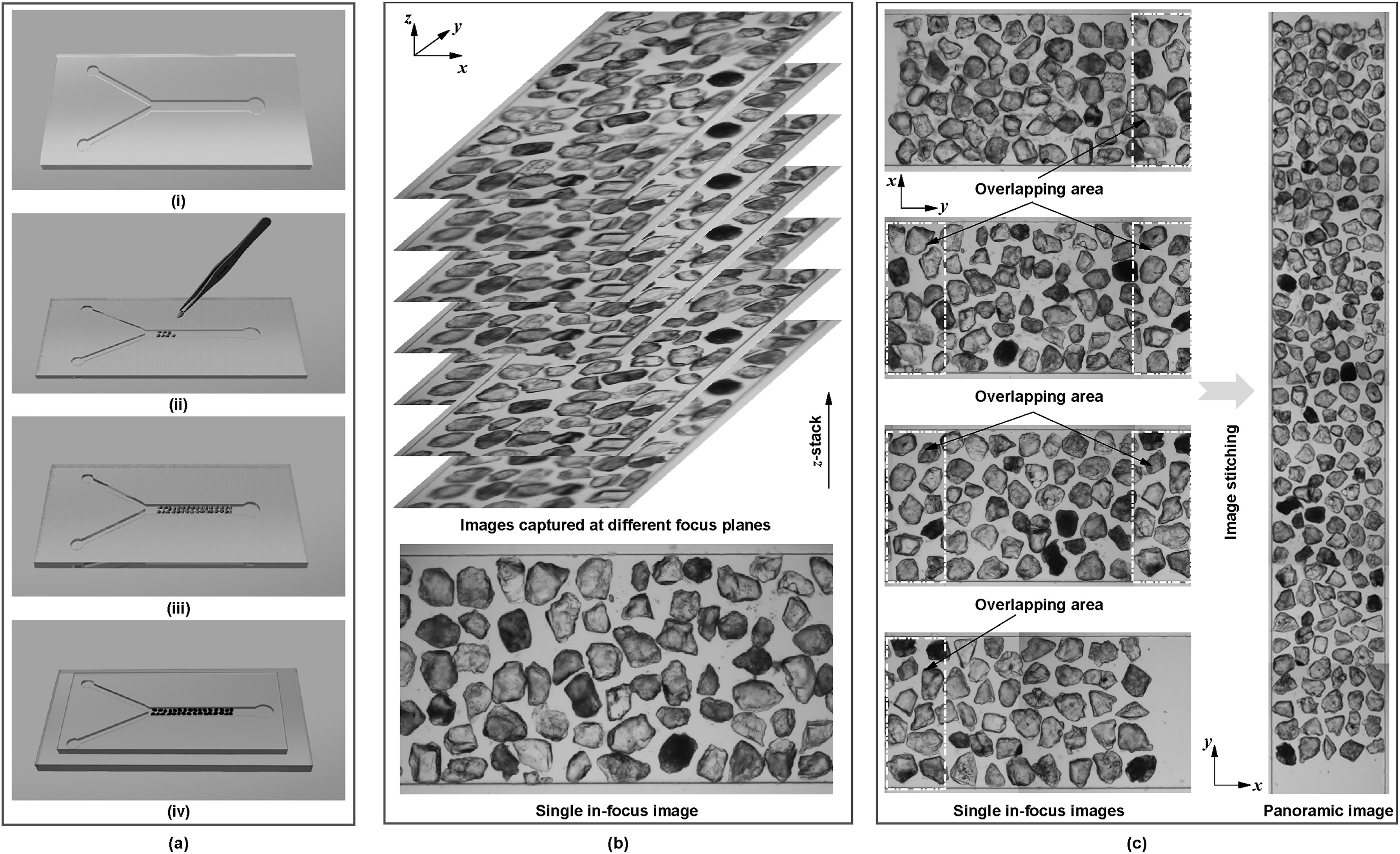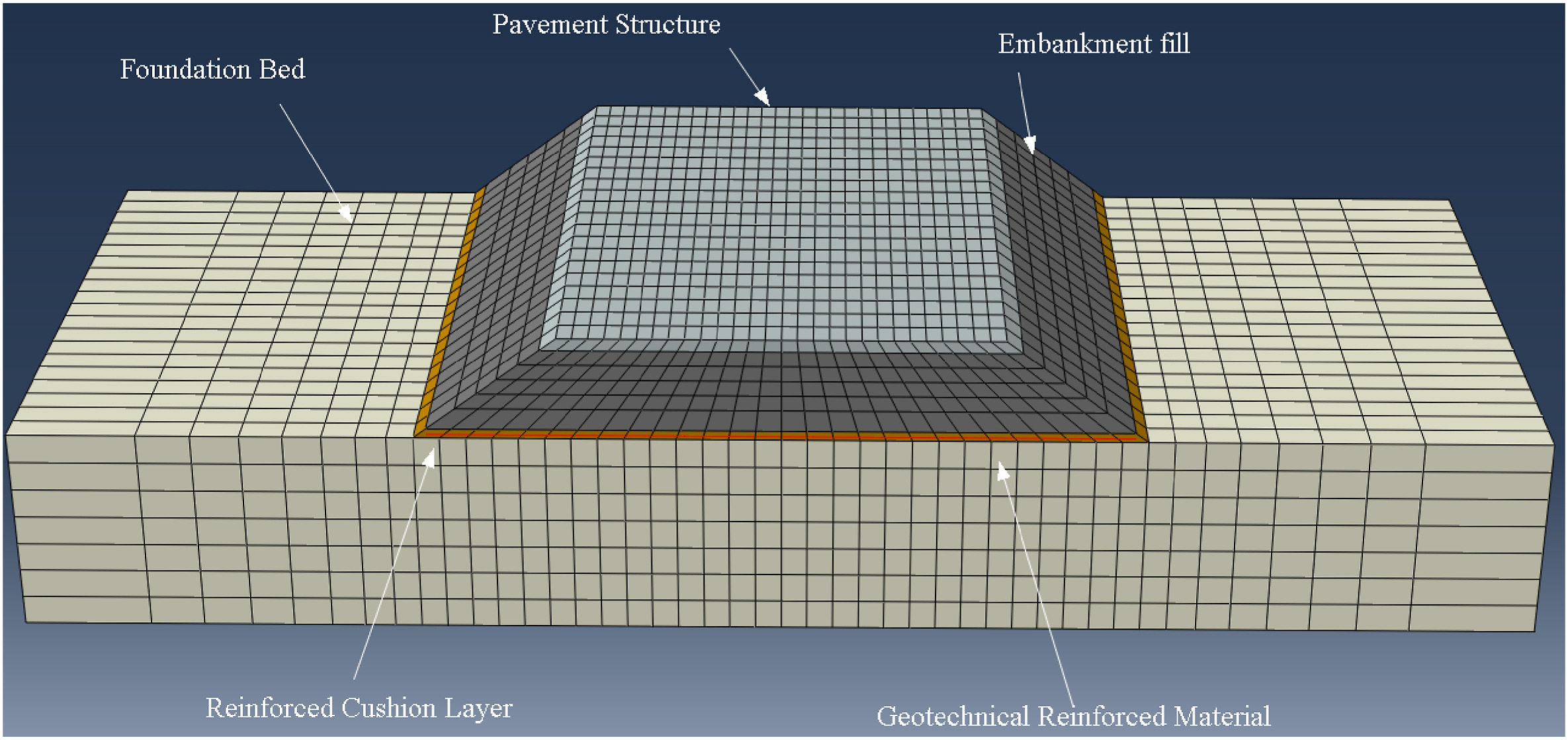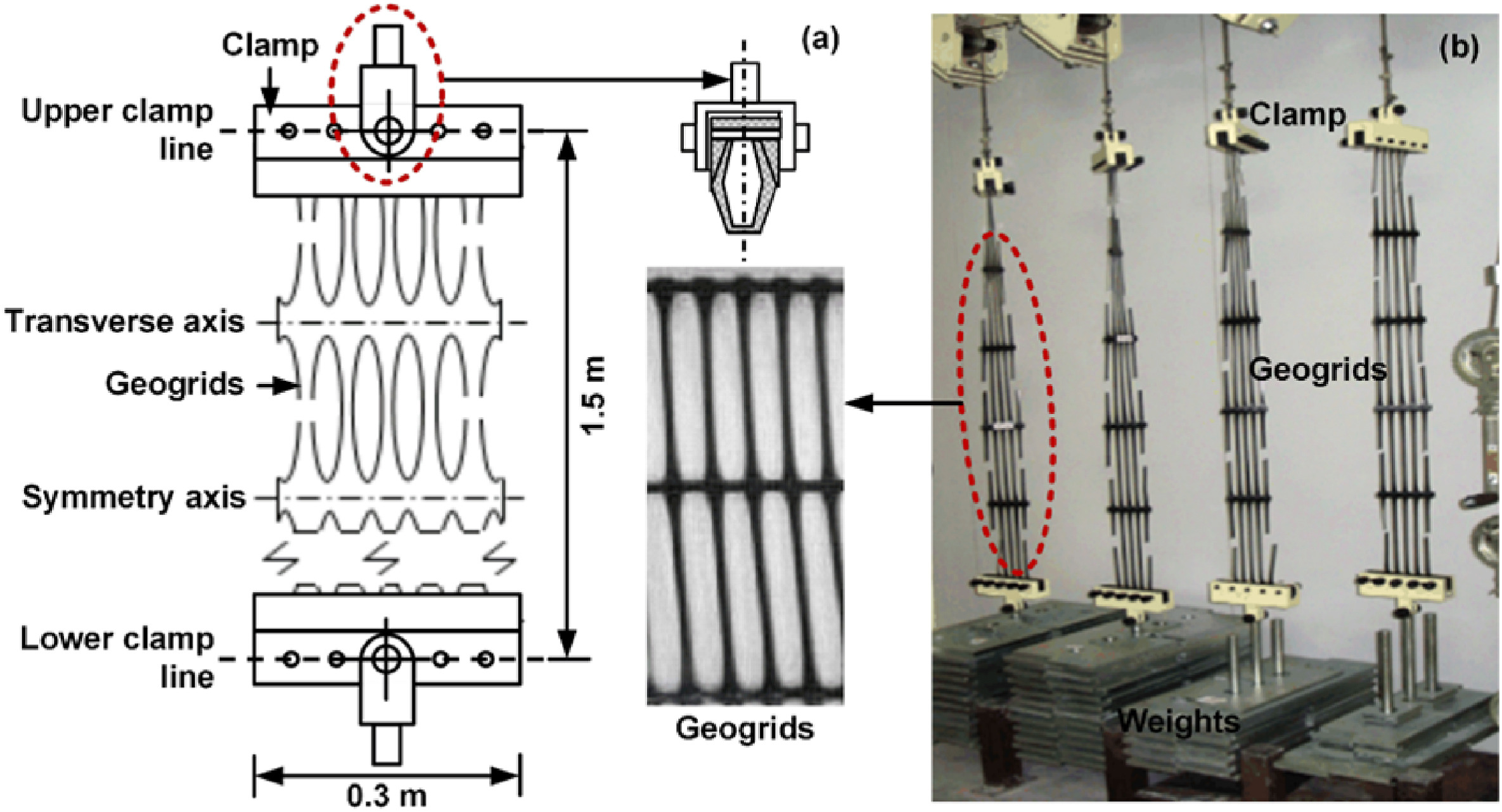-
Estimating shear strength of high-level pillars supported with cemented backfilling using the Hoek–Brown strength criterion
Kaizong Xia, Congxin Chen, Xiumin Liu, Yue Wang, Xuanting Liu, Jiahao Yuan
2024, 16(2): 0-0. doi:10.1016/j.jrmge.2023.06.004
Abstract: Deep metal mines are often mined using the high-level pillars with subsequent cementation backfilling (HLSCB) mining method. At the design stage, it is therefore important to have a reasonable method for determining the shear strength of the high-level pillars (i.e. cohesion and internal friction angle) when they are supported by cemented backfilling. In this study, a formula was derived for the upper limit of the coShow FiguresDeep metal mines are often mined using the high-level pillars with subsequent cementation backfilling (HLSCB) mining method. At the design stage, it is therefore important to have a reasonable method for determining the shear strength of the high-level pillars (i.e. cohesion and internal friction angle) when they are supported by cemented backfilling. In this study, a formula was derived for the upper limit of the confining pressure σ3max on a high-level pillar supported by cemented backfilling in a deep metal mine. A new method of estimating the shear strength of such pillars was then proposed based on the Hoek–Brown failure criterion. Our analysis indicates that the horizontal stress σhh acting on the cemented backfill pillar can be simplified by expressing it as a constant value. A reasonable and effective value for σ3max can then be determined. The value of σ3max predicted using the proposed method is generally less than 3 MPa. Within this range, the shear strength of the high-level pillar is accurately calculated using the equivalent Mohr–Coulomb theory. The proposed method can effectively avoid the calculation of inaccurate shear strength values for the high-level pillars when the original Hoek–Brown criterion is used in the presence of large confining pressures, i.e. the situation in which the cohesion value is too large and the friction angle is too small can effectively be avoided. The proposed method is applied to a deep metal mine in China that is being excavated using the HLSCB method. The shear strength parameters of the high-level pillars obtained using the proposed method were input in the numerical simulations. The numerical results show that the recommended level heights and sizes of the high-level pillars and rooms in the mine are rational.
[...]Read more. -
Determination of uncertainties of geomechanical parameters of metamorphic rocks using petrographic analyses
Behzad Dastjerdy, Ali Saeidi, Shahriyar Heidarzadeh
2024, 16(2): 345-364. doi:10.1016/j.jrmge.2023.09.011
Abstract: Geomechanical parameters of intact metamorphic rocks determined from laboratory testing remain highly uncertain because of the great intrinsic variability associated with the degrees of metamorphism. The aim of this paper is to develop a proper methodology to analyze the uncertainties of geomechanical characteristics by focusing on three domains, i.e. data treatment process, schistosity angle, and mineralogy. First,Show FiguresGeomechanical parameters of intact metamorphic rocks determined from laboratory testing remain highly uncertain because of the great intrinsic variability associated with the degrees of metamorphism. The aim of this paper is to develop a proper methodology to analyze the uncertainties of geomechanical characteristics by focusing on three domains, i.e. data treatment process, schistosity angle, and mineralogy. First, the variabilities of the geomechanical laboratory data of Westwood Mine (Quebec, Canada) were examined statistically by applying different data treatment techniques, through which the most suitable outlier methods were selected for each parameter using multiple decision-making criteria and engineering judgment. Results indicated that some methods exhibited better performance in identifying the possible outliers, although several others were unsuccessful because of their limitation in large sample size. The well-known boxplot method might not be the best outlier method for most geomechanical parameters because its calculated confidence range was not acceptable according to engineering judgment. However, several approaches, including adjusted boxplot, 2MADe, and 2SD, worked very well in the detection of true outliers. Also, the statistical tests indicate that the best-fitting probability distribution function for geomechanical intact parameters might not be the normal distribution, unlike what is assumed in most geomechanical studies. Moreover, the negative effects of schistosity angle on the uniaxial compressive strength (UCS) variabilities were reduced by excluding the samples within a specific angle range where the UCS data present the highest variation. Finally, a petrographic analysis was conducted to assess the associated uncertainties such that a logical link was found between the dispersion and the variabilities of hard and soft minerals.
[...]Read more. -
Evaluation of excavation damaged zones (EDZs) in Horonobe Underground Research Laboratory (URL)
Koji Hata, Sumio Niunoya, Kazuhei Aoyagi, Nobukatsu Miyara
2024, 16(2): 365-378. doi:10.1016/j.jrmge.2023.05.010
Abstract: Excavation of underground caverns, such as mountain tunnels and energy-storage caverns, may cause the damages to the surrounding rock as a result of the stress redistribution. In this influenced zone, new cracks and discontinuities are created or propagate in the rock mass. Therefore, it is effective to measure and evaluate the acoustic emission (AE) events generated by the rocks, which is a small elastic vibration,Show FiguresExcavation of underground caverns, such as mountain tunnels and energy-storage caverns, may cause the damages to the surrounding rock as a result of the stress redistribution. In this influenced zone, new cracks and discontinuities are created or propagate in the rock mass. Therefore, it is effective to measure and evaluate the acoustic emission (AE) events generated by the rocks, which is a small elastic vibration, and permeability change. The authors have developed a long-term measurement device that incorporates an optical AE (O-AE) sensor, an optical pore pressure sensor, and an optical temperature sensor in a single multi-optical measurement probe (MOP). Japan Atomic Energy Agency has been conducting R&D activities to enhance the reliability of high-level radioactive waste (HLW) deep geological disposal technology. In a high-level radioactive disposal project, one of the challenges is the development of methods for long-term monitoring of rock mass behavior. Therefore, in January 2014, the long-term measurements of the hydro-mechanical behavior of the rock mass were launched using the developed MOP in the vicinity of 350 m below the surface at the Horonobe Underground Research Center. The measurement results show that AEs occur frequently up to 1.5 m from the wall during excavation. In addition, hydraulic conductivity increased by 2–4 orders of magnitude. Elastoplastic analysis revealed that the hydraulic behavior of the rock mass affected the pore pressure fluctuations and caused micro-fractures. Based on this, a conceptual model is developed to represent the excavation damaged zone (EDZ), which contributes to the safe geological disposal of radioactive waste.
[...]Read more. -
On the calibration of a shear stress criterion for rock joints to represent the full stress-strain profile
Akram Deiminiat, Jonathan D. Aubertin, Yannic Ethier
2024, 16(2): 379-392. doi:10.1016/j.jrmge.2023.07.019
Abstract: Conventional numerical solutions developed to describe the geomechanical behavior of rock interfaces subjected to differential load emphasize peak and residual shear strengths. The detailed analysis of pre- and post-peak shear stress-displacement behavior is central to various time-dependent and dynamic rock mechanic problems such as rockbursts and structural instabilities in highly stressed conditions. The completeShow FiguresConventional numerical solutions developed to describe the geomechanical behavior of rock interfaces subjected to differential load emphasize peak and residual shear strengths. The detailed analysis of pre- and post-peak shear stress-displacement behavior is central to various time-dependent and dynamic rock mechanic problems such as rockbursts and structural instabilities in highly stressed conditions. The complete stress-displacement surface (CSDS) model was developed to describe analytically the pre- and post-peak behavior of rock interfaces under differential loads. Original formulations of the CSDS model required extensive curve-fitting iterations which limited its practical applicability and transparent integration into engineering tools. The present work proposes modifications to the CSDS model aimed at developing a comprehensive and modern calibration protocol to describe the complete shear stress-displacement behavior of rock interfaces under differential loads. The proposed update to the CSDS model incorporates the concept of mobilized shear strength to enhance the post-peak formulations. Barton's concepts of joint roughness coefficient (JRC) and joint compressive strength (JCS) are incorporated to facilitate empirical estimations for peak shear stress and normal closure relations. Triaxial/uniaxial compression test and direct shear test results are used to validate the updated model and exemplify the proposed calibration method. The results illustrate that the revised model successfully predicts the post-peak and complete axial stress–strain and shear stress–displacement curves for rock joints.
[...]Read more. -
Effect of dynamic loading orientation on fracture properties of surrounding rocks in twin tunnels
Ze Deng, Zheming Zhu, Lei Zhou, Leijun Ma, Jianwei Huang, Yao Zhang
2024, 16(2): 393-409. doi:10.1016/j.jrmge.2023.06.017
Abstract: For expedited transportation, vehicular tunnels are often designed as two adjacent tunnels, which frequently experience dynamic stress waves from various orientations during blasting excavation. To analyze the impact of dynamic loading orientation on the stability of the twin-tunnel, a split Hopkinson pressure bar (SHPB) apparatus was used to conduct a dynamic test on the twin-tunnel specimens. The two tunnels were rShow FiguresFor expedited transportation, vehicular tunnels are often designed as two adjacent tunnels, which frequently experience dynamic stress waves from various orientations during blasting excavation. To analyze the impact of dynamic loading orientation on the stability of the twin-tunnel, a split Hopkinson pressure bar (SHPB) apparatus was used to conduct a dynamic test on the twin-tunnel specimens. The two tunnels were rotated around the specimen’s center to consider the effect of dynamic loading orientation. LS-DYNA software was used for numerical simulation to reveal the failure properties and stress wave propagation law of the twin-tunnel specimens. The findings indicate that, for a twin-tunnel exposed to a dynamic load from different orientations, the crack initiation position appears most often at the tunnel corner, tunnel spandrel, and tunnel floor. As the impact direction is created by a certain angle (30°, 45°, 60°, 120°, 135°, and 150°), the fractures are produced in the middle of the line between the left tunnel corner and the right tunnel spandrel. As the impact loading angle (α) is 90°, the tunnel sustains minimal damage, and only tensile fractures form in the surrounding rocks. The orientation of the impact load could change the stress distribution in the twin-tunnel, and major fractures are more likely to form in areas where the tensile stress is concentrated.
[...]Read more. -
Experimental study on the influences of cutter geometry and material on scraper wear during shield TBM tunnelling in abrasive sandy ground
Shaohui Tang, Xiaoping Zhang, Quansheng Liu, Qi Zhang, Xinfang Li, Haojie Wang
2024, 16(2): 410-425. doi:10.1016/j.jrmge.2023.10.009
Abstract: When shield TBM tunnelling in abrasive sandy ground, the rational design of cutter parameters is critical to reduce tool wear and improve tunnelling efficiency. However, the influence mechanism of cutter parameters on scraper wear remains unclear due to the lack of a reliable test method. Geometry and material optimisation are often based on subjective experience, which is unfavourable for improving scraper geologicaShow FiguresWhen shield TBM tunnelling in abrasive sandy ground, the rational design of cutter parameters is critical to reduce tool wear and improve tunnelling efficiency. However, the influence mechanism of cutter parameters on scraper wear remains unclear due to the lack of a reliable test method. Geometry and material optimisation are often based on subjective experience, which is unfavourable for improving scraper geological adaptability. In the present study, the newly developed WHU-SAT soil abrasion test was used to evaluate the variation in scraper wear with cutter geometry, material and hardness. The influence mechanism of cutter parameters on scraper wear has been revealed according to the scratch characteristics of the scraper surface. Cutter geometry and material parameters have been optimised to reduce scraper wear. The results indicate that the variation in scraper wear with cutter geometry is related to the cutting resistance, frictional resistance and stress distribution. An appropriate increase in the front angle (or back angle) reduces the cutting resistance (or frictional resistance), while an excessive increase in the front angle (or back angle) reduces the edge angle and causes stress concentration. The optimal front angle, back angle and edge angle for quartz sand samples are α = 25°, β = 10° and γ = 55°, respectively. The wear resistance of the modelled scrapers made of different metal materials is related to the chemical elements and microstructure. The wear resistances of the modelled scrapers made of 45#, 06Cr19Ni10, 42CrMo4 and 40CrNiMoA are 0.569, 0.661, 0.691 and 0.728 times those made of WC-Co, respectively. When the alloy hardness is less than 47 HRC (or greater than 58 HRC), scraper wear decreases slowly with increasing alloy hardness as the scratch depth of the particle asperity on the metal surface stabilizes at a high (or low) level. However, when the alloy hardness is between 47 HRC and 58 HRC, scraper wear decreases rapidly with increasing alloy hardness as the scratch depth transitions from high to low levels. The sensitive hardness interval and recommended hardness interval for quartz sand are [47, 58] and [58, 62], respectively. The present study provides a reference for optimising scraper parameters and improving cutterhead adaptability in abrasive sandy ground tunnelling.
[...]Read more. -
Effect of fracture fluid flowback on shale microfractures using CT scanning
Jiale He, Zhihong Zhao, Yiran Geng, Yuping Chen, Jianchun Guo, Cong Lu, Shouyi Wang, Xueliang Han, Jun Zhang
2024, 16(2): 426-436. doi:10.1016/j.jrmge.2023.07.006
Abstract: The field data of shale fracturing demonstrate that the flowback performance of fracturing fluid is different from that of conventional reservoirs, where the flowback rate of shale fracturing fluid is lower than that of conventional reservoirs. At the early stage of flowback, there is no single-phase flow of the liquid phase in shale, but rather a gas-water two-phase flow, such that the single-phase flow model for tiShow FiguresThe field data of shale fracturing demonstrate that the flowback performance of fracturing fluid is different from that of conventional reservoirs, where the flowback rate of shale fracturing fluid is lower than that of conventional reservoirs. At the early stage of flowback, there is no single-phase flow of the liquid phase in shale, but rather a gas-water two-phase flow, such that the single-phase flow model for tight oil and gas reservoirs is not applicable. In this study, pores and microfractures are extracted based on the experimental results of computed tomography (CT) scanning, and a spatial model of microfractures is established. Then, the influence of rough microfracture surfaces on the flow is corrected using the modified cubic law, which was modified by introducing the average deviation of the microfracture height as a roughness factor to consider the influence of microfracture surface roughness. The flow in the fracture network is simulated using the modified cubic law and the lattice Boltzmann method (LBM). The results obtained demonstrate that most of the fracturing fluid is retained in the shale microfractures, which explains the low fracturing fluid flowback rate in shale hydraulic fracturing.
[...]Read more. -
Mechanical behaviour of fiber-reinforced grout in rock bolt reinforcement
Yingchun Li, Ammar Ahmed, Danqi Li
2024, 16(2): 437-453. doi:10.1016/j.jrmge.2023.06.016
Abstract: Grouted rock bolts subject to axial loading in the field exhibit various failure modes, among which the most predominant one is the bolt-grout interface failure. Thus, mechanical characterization of the grout is essential for understanding its performance in ground support. To date, few studies have been conducted to characterize the mechanical behaviour of fiber-reinforced grout (FRG) in rock bolt reinforcement. HerShow FiguresGrouted rock bolts subject to axial loading in the field exhibit various failure modes, among which the most predominant one is the bolt-grout interface failure. Thus, mechanical characterization of the grout is essential for understanding its performance in ground support. To date, few studies have been conducted to characterize the mechanical behaviour of fiber-reinforced grout (FRG) in rock bolt reinforcement. Here we experimentally studied the mechanical behaviour of FRG under uniaxial compression, indirect tension, and direct shear loading conditions. We also conducted a series of pullout tests of rebar bolt encapsulated with different grouts including conventional cementitious grout and FRG. FRG was developed using 15% silica fume (SF) replacement of cement (by weight) and steel fiber to achieve high-strength and crack-resistance to overcome drawbacks of the conventional grout. Two types of steel fibers including straight and wavy steel fibers were further added to enhance the grout quality. The effect of fiber shape and fiber volume proportion on the grout mechanical properties were examined. Our experimental results showed that the addition of SF and steel fiber by 1.5% fiber volume proportion could lead to the highest compressive, tensile, and shear strengths of the grout. The minimum volume of fiber that could improve the mechanical properties of grout was found at 0.5%. The scanning electron microscopy (SEM) analysis demonstrated that steel fibers act as an excellent bridge to prevent the cracks from propagating at the interfacial region and hence to aid in maintaining the integrity of the cementitious grout. Our laboratory pullout tests further confirmed that FRG could prevent the cylindrical grout annulus from radial crack and hence improve the rebar's load carrying capacity. Therefore, FRG has a potential to be utilized in civil and mining applications where high-strength and crack-resistance support is required.
[...]Read more. -
Analysis of pressure response at an observation well against pressure build-up by early stage of CO2 geological storage project
Qiang Sun, Kyuro Sasaki, Qinxi Dong, Zhenni Ye, Hui Wang, Huan Sun
2024, 16(2): 470-482. doi:10.1016/j.jrmge.2023.03.013
Abstract: To ensure a safe and stable CO2 storage, pressure responses at an observation well are expected to be an important and useful field monitoring item to estimate the CO2 storage behaviors and the aquifer parameters during and after injecting CO2, because it can detect whether the injected CO2 leaks to the ground surface or the bottom of the sea. In this study, pressure responses were simulated to present design factorsShow FiguresTo ensure a safe and stable CO2 storage, pressure responses at an observation well are expected to be an important and useful field monitoring item to estimate the CO2 storage behaviors and the aquifer parameters during and after injecting CO2, because it can detect whether the injected CO2 leaks to the ground surface or the bottom of the sea. In this study, pressure responses were simulated to present design factors such as well location and pressure transmitter of the observation well. Numerical simulations on the pressure response and the time-delay from pressure build-up after CO2 injection were conducted by considering aquifer parameters and distance from the CO2 injection well to an observation well. The measurement resolution of a pressure transmitter installed in the observation well was presented based on numerical simulation results of the pressure response against pressure build-up at the injection well and CO2 plume front propagations. Furthermore, the pressure response at an observation well was estimated by comparing the numerical simulation results with the curve of CO2 saturation and relative permeability. It was also suggested that the analytical solution can be used for the analysis of the pressure response tendency using pressure build-up and dimensionless parameters of hydraulic diffusivity. Thus, a criterion was established for selecting a pressure transducer installed at an observation well to monitor the pressure responses with sufficient accuracy and resolution, considering the distance from the injection well and the pressure build-up at the injection well, for future carbon capture and storage (CCS) projects.
[...]Read more. -
Wetting front migration model of ion-adsorption rare earth during the multi-hole unsaturated liquid injection
Yu Wang, Xiaojun Wang, Yuchen Qiu, Hao Wang, Gang Li, Kaijian Hu, Wen Zhong, Zhongqun Guo, Bing Li, Chunlei Zhang, Guangxiang Ye
2024, 16(2): 483-496. doi:10.1016/j.jrmge.2023.06.020
Abstract: In the process of ion-adsorption rare earth ore leaching, the migration characteristics of the wetting front in multi-hole injection holes and the influence of wetting front intersection effect on the migration distance of wetting fronts are still unclear. Besides, wetting front migration distance and leaching time are usually required to optimize the leaching process. In this study, wetting front migration tests ofShow FiguresIn the process of ion-adsorption rare earth ore leaching, the migration characteristics of the wetting front in multi-hole injection holes and the influence of wetting front intersection effect on the migration distance of wetting fronts are still unclear. Besides, wetting front migration distance and leaching time are usually required to optimize the leaching process. In this study, wetting front migration tests of ion-adsorption rare earth ores during the multi-hole fluid injection (the spacing between injection holes was 10 cm, 12 cm and 14 cm) and single-hole fluid injection were completed under the constant water head height. At the pre-intersection stage, the wetting front migration laws of ion-adsorption rare earth ores during the multi-hole fluid injection and single-hole fluid injection were identical. At the post-intersection stage, the intersection accelerated the wetting front migration. By using the Darcy's law, the intersection effect of wetting fronts during the multi-hole liquid injection was transformed into the water head height directly above the intersection. Finally, based on the Green-Ampt model, a wetting front migration model of ion-adsorption rare earth ores during the multi-hole unsaturated liquid injection was established. Error analysis results showed that the proposed model can accurately simulate the infiltration process under experimental conditions. The research results enrich the infiltration law and theory of ion-adsorption rare earth ores during the multi-hole liquid injection, and this study provides a scientific basis for optimizing the liquid injection well pattern parameters of ion-adsorption rare earth in situ leaching in the future.
[...]Read more. -
Shear band evolution and acoustic emission characteristics of sandstone containing non-persistent flaws
Shuting Miao, Peng-Zhi Pan, Chuanqing Zhang, Lei Huo
2024, 16(2): 497-513. doi:10.1016/j.jrmge.2023.04.003
Abstract: Direct shear tests were conducted on sandstone specimens under different constant normal stresses to study the coalescence of cracks between non-persistent flaws and the shear sliding characteristics of the shear-formed fault. Digital image correlation and acoustic emission (AE) techniques were used to monitor the evolution of shear bands at the rock bridge area and microcracking behaviors. The experimental results rShow FiguresDirect shear tests were conducted on sandstone specimens under different constant normal stresses to study the coalescence of cracks between non-persistent flaws and the shear sliding characteristics of the shear-formed fault. Digital image correlation and acoustic emission (AE) techniques were used to monitor the evolution of shear bands at the rock bridge area and microcracking behaviors. The experimental results revealed that the shear stresses corresponding to the peak and sub-peak in the stress-displacement curve are significantly affected by the normal stress. Strain localization bands emerged at both the tip of joints and the rock bridge, and their extension and interaction near the peak stress caused a surge in the AE hit rate and a significant decrease in the AE b value. Short and curvilinear strain bands were detected at low normal stress, while high normal stress generally led to more microcracking events and longer coplanar cracks at the rock bridge area. Furthermore, an increase in normal stress resulted in a higher AE count rate and more energetic AE events during friction sliding along the shear-formed fault. It was observed that the elastic energy released during the crack coalescence at the pre-peak stage was much greater than that released during friction sliding at the post-peak stage. More than 75% of AE events were located in the low-frequency band (0–100 kHz), and this proportion continued to rise with increasing normal stress. Moreover, more AE events of low AF value and high RA value were observed in specimens subjected to high normal stress, indicating that greater normal stress led to more microcracks of shear nature.
[...]Read more. -
Numerical modelling of post-failure behaviors of coal specimens
Ajeet Yadav, Bhaskara Behera, Gauri Shankar Prasad Singh, Sanjay Kumar Sharma
2024, 16(2): 514-531. doi:10.1016/j.jrmge.2023.06.011
Abstract: A modelling approach consisting of best-fit relations to estimate the post-yield strength parameters is presented for simulating post-peak behavior beyond the point of residual strength of coal pillars having different w/h ratios. The model was developed based on back-analysis of the complete stress-strain behavior of specimens belonging to six different Indian coal seams with different w/h ratios of 0.5–13.5.Show FiguresA modelling approach consisting of best-fit relations to estimate the post-yield strength parameters is presented for simulating post-peak behavior beyond the point of residual strength of coal pillars having different w/h ratios. The model was developed based on back-analysis of the complete stress-strain behavior of specimens belonging to six different Indian coal seams with different w/h ratios of 0.5–13.5. It was found that the simultaneous degradation of the cohesion and friction angle of the Mohr-Coulomb rock material characterizes the post-peak strength behavior of the rock. The resulting expressions are simplistic as they require parameters that can be easily determined using uniaxial and triaxial compression results. Eventually, the developed model was validated by simulating the triaxial tests of coal specimens with different sizes under varying confining stresses and comparing its findings with the published test results. The study showed that its implementation in the numerical model could reproduce laboratory-observed mechanical response, deformation behavior, and failure mechanism very closely.
[...]Read more. -
Experimental study on workability and permeability of sandy soils conditioned with thickened foam
Zhiyao Feng, Shuying Wang, Tongming Qu, Xiangcou Zheng, Fanlin Ling
2024, 16(2): 532-544. doi:10.1016/j.jrmge.2023.05.015
Abstract: Water spewing and muck plugging often occur during earth pressure balance (EPB) shield machines tunnelling in water-rich sandy strata, even though the conventional foam has been employed to condition sandy soils. In this study, a novel thickened foaming agent suitable for EPB shield tunnelling in water-rich sandy strata is developed. In contrast to conventional foam-conditioned sands, the thickened foam-conditioned sShow FiguresWater spewing and muck plugging often occur during earth pressure balance (EPB) shield machines tunnelling in water-rich sandy strata, even though the conventional foam has been employed to condition sandy soils. In this study, a novel thickened foaming agent suitable for EPB shield tunnelling in water-rich sandy strata is developed. In contrast to conventional foam-conditioned sands, the thickened foam-conditioned sand has a low permeability due to the consistent filling of soil pores with the thickened foam, and the initial permeability coefficient decreases by approximately two orders of magnitude. It also exhibits a suitable workability, which is attributed to the enhanced capability of the thickened foam to condition sandy soils. In addition, the effect of concentration on the stability of the foam is explained by the Gibbs-Marangoni effect, and conditioning mechanisms for the thickened foam on sands are discussed from the evolution of foam bubbles.
[...]Read more. -
Mechanical responses of anchoring structure under triaxial cyclic loading
Peng Wang, Nong Zhang, Qun Wei, Xingliang Xu, Guangzhen Cui, Aoran Li, Sen Yang, Jiaguang Kan
2024, 16(2): 545-560. doi:10.1016/j.jrmge.2023.04.020
Abstract: Dynamic load on anchoring structures (AS) within deep roadways can result in cumulative damage and failure. This study develops an experimental device designed to test AS under triaxial loads. The device enables the investigation of the mechanical response, failure mode, instability assessment criteria, and anchorage effect of AS subjected to combined cyclic dynamic-static triaxial stress paths. The results show thatShow FiguresDynamic load on anchoring structures (AS) within deep roadways can result in cumulative damage and failure. This study develops an experimental device designed to test AS under triaxial loads. The device enables the investigation of the mechanical response, failure mode, instability assessment criteria, and anchorage effect of AS subjected to combined cyclic dynamic-static triaxial stress paths. The results show that the peak bearing strength is positively correlated with the anchoring matrix strength, anchorage length, and edgewise compressive strength. The bearing capacity decreases significantly when the anchorage direction is severely inclined. The free face failure modes are typically transverse cracking, concave fracturing, V-shaped slipping and detachment, and spallation detachment. Besides, when the anchoring matrix strength and the anchorage length decrease while the edgewise compressive strength, loading rate, and anchorage inclination angle increase, the failure intensity rises. Instability is determined by a negative tangent modulus of the displacement-strength curve or the continued deformation increase against the general downward trend. Under cyclic loads, the driving force that breaks the rock mass along the normal vector and the rigidity of the AS are the two factors that determine roadway stability. Finally, a control measure for surrounding rock stability is proposed to reduce the internal driving force via a pressure relief method and improve the rigidity of the AS by full-length anchorage and grouting modification.
[...]Read more. -
Performances of fissured red sandstone after thermal treatment with constant-amplitude and low-cycle impacts
Yongjun Chen, Tubing Yin, P.G. Ranjith, Xibing Li, Qiang Li, Dengdeng Zhuang
2024, 16(2): 561-587. doi:10.1016/j.jrmge.2023.04.023
Abstract: In the engineering practices, it is increasingly common to encounter fractured rocks perturbed by temperatures and frequent dynamic loads. In this paper, the dynamic behaviors and fracture characteristics of red sandstone considering temperatures (25 °C, 200 °C, 400 °C, 600 °C, and 800 °C) and fissure angles (0°, 30°, 60°, and 90°) were evaluated under constant-amplitude and low-cyShow FiguresIn the engineering practices, it is increasingly common to encounter fractured rocks perturbed by temperatures and frequent dynamic loads. In this paper, the dynamic behaviors and fracture characteristics of red sandstone considering temperatures (25 °C, 200 °C, 400 °C, 600 °C, and 800 °C) and fissure angles (0°, 30°, 60°, and 90°) were evaluated under constant-amplitude and low-cycle (CALC) impacts actuated by a modified split Hopkinson pressure bar (SHPB) system. Subsequently, fracture morphology and second-order statistics within the grey-level co-occurrence matrix (GLCM) were examined using scanning electron microscopy (SEM). Meanwhile, the deep analysis and discussion of the mechanical response were conducted through the synchronous thermal analyzer (STA) test, numerical simulations, one-dimensional stress wave theory, and material structure. The multiple regression models between response variables and interactive effects of independent variables were established using the response surface method (RSM). The results demonstrate the fatigue strength and life diminish as temperatures rise and increase with increasing fissure angles, while the strain rate exhibits an inverse behavior. Furthermore, the peak stress intensification and strain rate softening observed during CALC impact exhibit greater prominence at increased fissure angles. The failure is dominated by tensile damage with concise evolution paths and intergranular cracks as well as the compressor-crushed zone which may affect the failure mode after 400 °C. The second-order statistics of GLCM in SEM images exhibit a considerable dependence on the temperatures. Also, thermal damage dominated by thermal properties controls the material structure and wave impedance and eventually affects the incident wave intensity. The tensile wave reflected from the fissure surface is the inherent mechanism responsible for the angle effect exhibited by the fatigue strength and life. Ultimately, the peak stress intensification and strain rate softening during impact are determined by both the material structure and compaction governed by thermal damage and tensile wave.
[...]Read more. -
A creep model for ultra-deep salt rock considering thermal-mechanical damage under triaxial stress conditions
Chao Liang, Jianfeng Liu, Jianxiong Yang, Huining Xu, Zhaowei Chen, Lina Ran
2024, 16(2): 588-596. doi:10.1016/j.jrmge.2023.06.009
Abstract: To investigate the specific creep behavior of ultra-deep buried salt during oil and gas exploitation, a set of triaxial creep experiments was conducted at elevated temperatures with constant axial pressure and unloading confining pressure conditions. Experimental results show that the salt sample deforms more significantly with the increase of applied temperature and deviatoric loading. The accelerated creep phase isShow FiguresTo investigate the specific creep behavior of ultra-deep buried salt during oil and gas exploitation, a set of triaxial creep experiments was conducted at elevated temperatures with constant axial pressure and unloading confining pressure conditions. Experimental results show that the salt sample deforms more significantly with the increase of applied temperature and deviatoric loading. The accelerated creep phase is not occurring until the applied temperature reaches 130 °C, and higher temperature is beneficial to the occurrence of accelerated creep. To describe the specific creep behavior, a novel three-dimensional (3D) creep constitutive model is developed that incorporates the thermal and mechanical variables into mechanical elements. Subsequently, the standard particle swarm optimization (SPSO) method is adopted to fit the experimental data, and the sensibility of key model parameters is analyzed to further illustrate the model function. As a result, the model can accurately predict the creep behavior of salt under the coupled thermo-mechanical effect in deep-buried condition. Based on the research results, the creep mechanical behavior of wellbore shrinkage is predicted in deep drilling projects crossing salt layer, which has practical implications for deep rock mechanics problems.
[...]Read more. -
Damage evolution of rock-encased-backfill structure under stepwise cyclic triaxial loading
Xin Yu, Yuye Tan, Weidong Song, John Kemeny, Shengwen Qi, Bowen Zheng, Songfeng Guo
2024, 16(2): 597-615. doi:10.1016/j.jrmge.2023.11.015
Abstract: Rock-encased-backfill (RB) structures are common in underground mining, for example in the cut-and-fill and stoping methods. To understand the effects of cyclic excavation and blasting activities on the damage of these RB structures, a series of triaxial stepwise-increasing-amplitude cyclic loading experiments was conducted with cylindrical RB specimens (rock on outside, backfill on inside) with different volume fracShow FiguresRock-encased-backfill (RB) structures are common in underground mining, for example in the cut-and-fill and stoping methods. To understand the effects of cyclic excavation and blasting activities on the damage of these RB structures, a series of triaxial stepwise-increasing-amplitude cyclic loading experiments was conducted with cylindrical RB specimens (rock on outside, backfill on inside) with different volume fractions of rock (VF = 0.48, 0.61, 0.73, and 0.84), confining pressures (0, 6, 9, and 12 MPa), and cyclic loading rates (200, 300, 400, and 500 N/s). The damage evolution and meso-crack formation during the cyclic tests were analyzed with results from stress-strain hysteresis loops, acoustic emission events, and post-failure X-ray 3D fracture morphology. The results showed significant differences between cyclic and monotonic loadings of RB specimens, particularly with regard to the generation of shear microcracks, the development of stress memory and strain hardening, and the contact forces and associated friction that develops along the rock-backfill interface. One important finding is that as a function of the number of cycles, the elastic strain increases linearly and the dissipated energy increases exponentially. Also, compared with monotonic loading, the cyclic strain hardening characteristics are more sensitive to rising confining pressures during the initial compaction stage. Another finding is that compared with monotonic loading, more shear microcracks are generated during every reloading stage, but these microcracks tend to be dispersed and lessen the likelihood of large shear fracture formation. The transition from elastic to plastic behavior varies depending on the parameters of each test (confinement, volume fraction, and cyclic rate), and an interesting finding was that the transformation to plastic behavior is significantly lower under the conditions of 0.73 rock volume fraction, 400 N/s cyclic loading rate, and 9 MPa confinement. All the findings have important practical implications on the ability of backfill to support underground excavations.
[...]Read more. -
Predicting microseismic, acoustic emission and electromagnetic radiation data using neural networks
Yangyang Di, Enyuan Wang, Zhonghui Li, Xiaofei Liu, Tao Huang, Jiajie Yao
2024, 16(2): 616-629. doi:10.1016/j.jrmge.2023.05.012
Abstract: Microseism, acoustic emission and electromagnetic radiation (M-A-E) data are usually used for predicting rockburst hazards. However, it is a great challenge to realize the prediction of M-A-E data. In this study, with the aid of a deep learning algorithm, a new method for the prediction of M-A-E data is proposed. In this method, an M-A-E data prediction model is built based on a variety of neural networks after analyShow FiguresMicroseism, acoustic emission and electromagnetic radiation (M-A-E) data are usually used for predicting rockburst hazards. However, it is a great challenge to realize the prediction of M-A-E data. In this study, with the aid of a deep learning algorithm, a new method for the prediction of M-A-E data is proposed. In this method, an M-A-E data prediction model is built based on a variety of neural networks after analyzing numerous M-A-E data, and then the M-A-E data can be predicted. The predicted results are highly correlated with the real data collected in the field. Through field verification, the deep learning-based prediction method of M-A-E data provides quantitative prediction data for rockburst monitoring.
[...]Read more. -
Dynamic mechanical characteristics of deep Jinping marble in complex stress environments
Chendi Lou, Heping Xie, Ru Zhang, Hai Ren, Hao Luo, Kun Xiao, Yuan Peng, Qiang Tan, Li Ren
2024, 16(2): 630-644. doi:10.1016/j.jrmge.2023.08.005
Abstract: To reveal the dynamic mechanical characteristics of deep rocks, a series of impact tests under triaxial static stress states corresponding to depths of 300–2400 m were conducted. The results showed that both the strain rates and the stress environments in depth significantly affect the mechanical characteristics of rocks. The sensitivity of strain rate to the dynamic strength and deformation modulus shows a negShow FiguresTo reveal the dynamic mechanical characteristics of deep rocks, a series of impact tests under triaxial static stress states corresponding to depths of 300–2400 m were conducted. The results showed that both the strain rates and the stress environments in depth significantly affect the mechanical characteristics of rocks. The sensitivity of strain rate to the dynamic strength and deformation modulus shows a negative correlation with depth, indicating that producing penetrative cracks in deep environments is more difficult when damage occurs. The dynamic strength shows a tendency to decrease and then increase slightly, but decreases sharply finally. Transmissivity demonstrates a similar trend as that of strength, whereas reflectivity indicates the opposite trend. Furthermore, two critical depths with high dynamically induced hazard possibilities based on the China Jinping Underground Laboratory (CJPL) were proposed for deep engineering. The first critical depth is 600–900 m, beyond which the sensitivity of rock dynamic characteristics to the strain rate and restraint of circumferential stress decrease, causing instability of surrounding rocks under axial stress condition. The second one lies at 1500–1800 m, where the wave impedance and dynamic strength of deep surrounding rocks drop sharply, and the dissipation energy presents a negative value. It suggests that the dynamic instability of deep surrounding rocks can be divided into dynamic load dominant and dynamic load induced types, depending on the second critical depth.
[...]Read more. -
Temperature dependence of mechanical properties and damage evolution of hot dry rocks under rapid cooling
Longjun Dong, Yihan Zhang, Lichang Wang, Lu Wang, Shen Zhang
2024, 16(2): 645-660. doi:10.1016/j.jrmge.2023.08.014
Abstract: Understanding the differences in mechanical properties and damage characteristics of granitoid under high temperatures is crucial for exploring deep geothermal resources. This study analyzes the evolution of the acoustic emission (AE) characteristics and mechanical parameters of granodiorite and granite after heating and water cooling by uniaxial compression and variable-angle shear tests under different temperatureShow FiguresUnderstanding the differences in mechanical properties and damage characteristics of granitoid under high temperatures is crucial for exploring deep geothermal resources. This study analyzes the evolution of the acoustic emission (AE) characteristics and mechanical parameters of granodiorite and granite after heating and water cooling by uniaxial compression and variable-angle shear tests under different temperature gradients. We identify their changes in mesostructure and mineral composition with electron probe microanalysis and scanning electron microscopy. Results show that these two hot dry rocks have similar diagenetic minerals and microstructure, but show significantly different mechanical and acoustic characteristics, and even opposing evolution trends in a certain temperature range. At the temperatures ranging from 100 °C to 500 °C, the compressive and shear mechanical properties of granodiorite switch repeatedly between weakening and strengthening, and those of granite show a continuous weakening trend. At 600 °C, both rocks exhibit a deterioration of mechanical properties. The damage mode of granite is characterized by initiating at low stress, exponential evolutionary activity, and intensified energy release. In contrast, granodiorite exhibits the characteristics of initiating at high stress, volatile evolutionary activity, and intermittent energy release, due to its more stable microstructure and fewer thermal defects compared to granite. As the temperature increases, the initiation and propagation of secondary cracks in granodiorite are suppressed to a certain extent, and the seismicity and brittleness are enhanced. The subtle differences in grain size, microscopic heterogeneity, and mineral composition of the two hot dry rocks determine the different acoustic-mechanical characteristics under heating and cooling, and the evolution trends with temperature. These findings are of great significance for the scientific and efficient construction of rock mass engineering by rationally utilizing different rock strata properties.
[...]Read more. -
Biomineralization and mineralization using microfluidics: A comparison study
Yang Xiao, Xiang He, Guoliang Ma, Chang Zhao, Jian Chu, Hanlong Liu
2024, 16(2): 661-669. doi:10.1016/j.jrmge.2023.03.019
Abstract: Biomineralization through microbial process has attracted great attention in the field of geotechnical engineering due to its ability to bind granular materials, clog pores, and seal fractures. Although minerals formed by biomineralization are generally the same as that by mineralization, their mechanical behaviors show a significant discrepancy. This study aims to figure out the differences between biomineralizationShow FiguresBiomineralization through microbial process has attracted great attention in the field of geotechnical engineering due to its ability to bind granular materials, clog pores, and seal fractures. Although minerals formed by biomineralization are generally the same as that by mineralization, their mechanical behaviors show a significant discrepancy. This study aims to figure out the differences between biomineralization and mineralization processes by visualizing and tracking the formation of minerals using microfluidics. Both biomineralization and mineralization processes occurred in the Y-shaped sand-containing microchip that mimics the underground sand layers. Images from different areas in the reaction microchannel of microchips were captured to directly compare the distribution of minerals. Crystal size and numbers from different reaction times were measured to quantify the differences between biomineralization and mineralization processes in terms of crystal kinetics. Results showed that the crystals were precipitated in a faster and more uncontrollable manner in the mineralization process than that in the biomineralization process, given that those two processes presented similar precipitation stages. In addition, a more heterogeneous distribution of crystals was observed during the biomineralization process. The precipitation behaviors were further explained by the classical nucleation crystal growth theory. The present microfluidic tests could advance the understanding of biomineralization and provide new insight into the optimization of biocementation technology.
[...]Read more. -
Effect of CO2 exposure on the mechanical strength of geopolymer-stabilized sandy soils
Hamid Reza Razeghi, Armin Geranghadr, Fatemeh Safaee, Pooria Ghadir, Akbar A. Javadi
2024, 16(2): 670-681. doi:10.1016/j.jrmge.2023.04.017
Abstract: In recent years, there has been growing interest in developing methods for mitigating greenhouse effect, as greenhouse gas emissions continue to contribute to global temperature rise. On the other hand, investigating geopolymers as environmentally friendly binders to mitigate the greenhouse effect using soil stabilization has been widely conducted. However, the effect of CO2 exposure on the mechanical properties of gShow FiguresIn recent years, there has been growing interest in developing methods for mitigating greenhouse effect, as greenhouse gas emissions continue to contribute to global temperature rise. On the other hand, investigating geopolymers as environmentally friendly binders to mitigate the greenhouse effect using soil stabilization has been widely conducted. However, the effect of CO2 exposure on the mechanical properties of geopolymer-stabilized soils is rarely reported. In this context, the effect of CO2 exposure on the mechanical and microstructural features of sandy soil stabilized with volcanic ash-based geopolymer was investigated. Several factors were concerned, for example the binder content, relative density, CO2 pressure, curing condition, curing time, and carbonate content. The results showed that the compressive strength of the stabilized sandy soil specimens with 20% volcanic ash increased from 3 MPa to 11 MPa. It was also observed that 100 kPa CO2 pressure was the optimal pressure for strength development among the other pressures. The mechanical strength showed a direct relationship with binder content and carbonate content. Additionally, in the ambient curing (AC) condition, the mechanical strength and carbonate content increased with the curing time. However, the required water for carbonation evaporated after 7 d of oven curing (OC) condition and as a result, the 14-d cured samples showed lower mechanical strength and carbonate content in comparison with 7-d cured samples. Moreover, the rate of strength development was higher in OC cured samples than AC cured samples until 7 d due to higher geopolymerization and carbonation rate.
[...]Read more. -
Numerical analysis of geosynthetic-reinforced embankment performance under moving loads
Xuanming Ding, Jinqiao Zhao, Qiang Ou, Jianfei Liu
2024, 16(2): 682-696. doi:10.1016/j.jrmge.2023.04.019
Abstract: The performance of geosynthetic-reinforced embankments under traffic moving loads is always a hotspot in the geotechnical engineering field. A three-dimensional (3D) model of a geosynthetic-reinforced embankment without drainage consolidation was established using the finite element software ABAQUS. In this model, the traffic loads were simulated by two moving loads of rectangular pattern, and their amplitude, range,Show FiguresThe performance of geosynthetic-reinforced embankments under traffic moving loads is always a hotspot in the geotechnical engineering field. A three-dimensional (3D) model of a geosynthetic-reinforced embankment without drainage consolidation was established using the finite element software ABAQUS. In this model, the traffic loads were simulated by two moving loads of rectangular pattern, and their amplitude, range, and moving speed were realized by a Fortran subroutine. The embankment fill was simulated by an equivalent linear viscoelastic model, which can reflect its viscoelasticity. The geogrid was simulated by the truss element, and the geocell was simulated by the membrane element. Infinite elements were utilized to weaken the boundary effect caused by the model geometry at the boundaries. Validation of the established numerical model was conducted by comparing the predicted deformations in the cross-section of the geosynthetic-reinforced embankment with those from the existing literature. On this basis, the dynamic stress and strain distribution in the pavement structure layer of the geosynthetic-reinforced embankment under a moving load was also analyzed. Finally, a parametric study was conducted to examine the influences of the different types of reinforcement, overload, and the moving load velocity on the geosynthetic-reinforced embankment.
[...]Read more. -
Evaluation of red soil-bentonite mixtures for compacted clay liners
A.S. Devapriya, T. Thyagaraj
2024, 16(2): 697-710. doi:10.1016/j.jrmge.2023.04.006
Abstract: Compacted clay liners are an integral part of the waste landfills, which are provided to contain the leachate within the landfills and protect the surrounding environment. Generally, locally available natural soils are used for the construction of compacted clay liners if they satisfy the design criteria. However, not all soils in their natural state satisfy all the design criteria for the liner materials. Thus, therShow FiguresCompacted clay liners are an integral part of the waste landfills, which are provided to contain the leachate within the landfills and protect the surrounding environment. Generally, locally available natural soils are used for the construction of compacted clay liners if they satisfy the design criteria. However, not all soils in their natural state satisfy all the design criteria for the liner materials. Thus, there is a definite need to modify the locally available natural soils by blending with bentonite to meet the required design criteria for the liners. In view of this, the present study evaluates the suitability of an Indian red soil enhanced with bentonite as a liner material. To achieve this, a series of experiments were carried out using locally available red soil and bentonite. First, the suitability of the red soil was evaluated as a liner material. The experimental results showed that the red soil met all the selection criteria stipulated by the Environmental Protection Agencies (EPAs) for the liners except the hydraulic conductivity criterion. Therefore, the red soil was mixed with bentonite contents of 10%, 20% and 30%, and the red soil-bentonite mixtures were evaluated for their suitability for liners in their compacted state. Further, as the liners in the arid and semi-arid regions are subjected to moisture variations due to seasonal moisture fluctuations and other factors, the red soil-bentonite mixtures were subjected to wet-dry cycles, and their suitability was evaluated after wet-dry cycles. The experimental results revealed that all the red soil-bentonite mixtures met the stipulated EPA criteria for the liners in the as-compacted state. However, the red soil-bentonite mixtures with 20% and 30% bentonite contents only satisfied the hydraulic conductivity requirement even after wet-dry cycles. The experimental findings were supplemented with the microstructural insights captured through digital camera images, scanning electron microscopy (SEM), and mercury intrusion porosimetry (MIP) studies.
[...]Read more. -
Analytical model for predicting time-dependent lateral deformation of geosynthetics-reinforced soil walls with modular block facing
Luqiang Ding, Chengzhi Xiao, Feilong Cui
2024, 16(2): 711-725. doi:10.1016/j.jrmge.2023.04.021
Abstract: To date, few models are available in the literature to consider the creep behavior of geosynthetics when predicting the lateral deformation (δ) of geosynthetics-reinforced soil (GRS) retaining walls. In this study, a general hyperbolic creep model was first introduced to describe the long-term deformation of geosynthetics, which is a function of elapsed time and two empirical parameters a and b. The conventionaShow FiguresTo date, few models are available in the literature to consider the creep behavior of geosynthetics when predicting the lateral deformation (δ) of geosynthetics-reinforced soil (GRS) retaining walls. In this study, a general hyperbolic creep model was first introduced to describe the long-term deformation of geosynthetics, which is a function of elapsed time and two empirical parameters a and b. The conventional creep tests with three different tensile loads (Pr) were conducted on two uniaxial geogrids to determine their creep behavior, as well as the a-Pr and b-Pr relationships. The test results show that increasing Pr accelerates the development of creep deformation for both geogrids. Meanwhile, a and b respectively show exponential and negatively linear relationships with Pr, which were confirmed by abundant experimental data available in other studies. Based on the above creep model and relationships, an accurate and reliable analytical model was then proposed for predicting the time-dependent δ of GRS walls with modular block facing, which was further validated using a relevant numerical investigation from the previous literature. Performance evaluation and comparison of the proposed model with six available prediction models were performed. Then a parametric study was carried out to evaluate the effects of wall height, vertical spacing of geogrids, unit weight and internal friction angle of backfills, and factor of safety against pullout on δ at the end of construction and 5 years afterwards. The findings show that the creep effect not only promotes δ but also raises the elevation of the maximum δ along the wall height. Finally, the limitations and application prospects of the proposed model were discussed and analyzed.
[...]Read more.


